Join the journey: Click here to get our top tips for affordable travel!


How to Say Travel in 100 Different Languages
Do you want to learn how to say travel in different languages if so, you have come to the right spot .
Travel is the gift that ties all cultures together, and helps us learn from one another. As such, this post provides a list of how to say travel in different languages. I speak three languages, and study linguistics as much as I can. I personally think that the more we know about how others describe the world, the better we will be.
This post begins with the top 25 most spoken languages and then breaks up each of the remaining languages by continent of origin.
Table of Contents
The Definition of Travel
For the sake of this post, we are covering the noun travel . The meaning (in English) is as follows: Travel can be defined as the act of moving from one geographical location to another, typically over a considerable distance. It involves exploration, experiencing different cultures, cuisines, traditions, and landscapes. Travel can also be seen as a journey of personal growth and self-discovery, allowing individuals to expand their horizons, gain new perspectives, and create lasting memories.
Interested in improving your language skills? Check out iTalki and Lingopie – my personal favorites for learning languages. These helped me reach and maintaing intermediate Spanish and Portuguese!
Travel in Different Languages: The Top 25 Most Spoken Languages
I’m starting off this post with the languages that are most spoken around the globe, and therefore the most useful languages to know if you are studying a foreign language.
1. Mandarin : 旅行 (Lǚxíng)
Spoken in: China and Taiwan
2. Spanish : el viaje (vee-ah-hey)
Spoken in over 18 countries and territories, including Spain, Argentina, Bolivia, Chile, Colombia, Costa Rica, Cuba, Guatemala, Mexico, and Puerto Rico .
3. English : travel
English is a major language in the US, the United Kingdom, Canada, Australia, and New Zealand.
4. Arabic : السفر (alsafar)
Arabic is spoken in 25 countries, but the language does differ greatly from African countries (e.g., Morocco, Algiria) to the Gulf / Middle East countries (e.g., Kuwait, the UAE). Egyptian Arabic is most commonly taught as a “neutral” version that can be understood by the majority of speakers.
5. Hindi : यात्रा (yaatra)
Hindi is one of the official languages of India (alongside English).
6. Portuguese : a viagem
Portuguese is the official language of Portugal, Brazil, Angola, Cabo Verde, Guinea-Bissau, Mozambique, São Tomé and Príncipe and East Timor.
7. Bengali : একটি ভ্রমণ (Ēkaṭi bhramaṇa)
Spoken in Northeastern India and Bangladesh.
8. Russian : поездка (poyezdka)
Russia is the official language of Russia, Belarus, Kyrgystan, and Kazakhstan, and spoken in several former Soviet countries.
9. Japanese : 旅 (tabi)
Japan is the official language of Japan and spoken widely in Hawaii too.
10. Landha (Western Punjabi) : ਯਾਤਰਾ (Yātarā)
Landha is spoken in parts of Pakistan and India.
11. Vietnamese: du lịch
Vietnamese is the official language of Vietnam.
12. Turkish : seyahat
Turkish is the official language of Turkey and also spoken in nearby countries such as Cyprus, Iran, Iraq, and more.
13. Marathi : Pravāsa
Marathi is spoken in western and central India (including Mumbai).
14. Telugu : ప్రయాణం (Prayāṇaṁ)
Telugu is spoken in Southern India.
15. Malay : perjalanan itu
Malay is spoken primarily in Malaysia, and some neighboring countries.
16. Korean : 여행 (yeohaeng)
Korean is spoken in both North Korea and South Korea.
17. French : le voyage
French is the official language of 28 countries, including France, Benin, Congo, Monaco, Senegal, and more.
18. Tamil : அந்த பயணம் (Anta payaṇam)
Tamil is the official language of the Indian state of Tamil Nadu.
19. German : die Reise
The German langauge is official in German, Austria, Switzerland, and Liechtenstein. It also is widely spoken in the Italian province of South Tyrol, Luxembourg, and Belgium.
20. Urdu : سفر (sufuh)
Urdu is the national language of Pakistan, and it has strong lexical similarity to Hindi (both derived from ancient Sanskrit).
21. Javanese : lelungan
Javanese is the official language of Indonesia.
22. Italian : il viaggio
Italian is the official language of Italy, as well as San Marino, and certain provinces in Switzerland. It is the closest language to ancient Latin.
23. Farsi : سفر
Farsi is also known as Persian, and is the official language of Iran.
24. Gujarati : પ્રવાસ (Pravāsa)
Gujarati is primarily spoken in the Indian state of Gujarat.
25. Pashto : سفر
Pashto is spoken in Afganistan, Pakistan, and Iran.
Travel in Different Languages: African Languages
26. afrikaans : die reis, 27. amharic : ጉዞው (guzowi), 28. bambara : taama in na, 28. fulani : yaadu, 29. hausa : tafiyar, 30. igbo : njem ahụ, 31. malagasy : ny dia, 32. oromo : imala sana, 33. shona : kufamba, 34. somali : safarka, 35. sudanese : perjalanan, 36. swahili: safari, 37. tigrinya : ምጉዓዝ, 38. twi : akwantuo, 39. xhosa : uhambo, 40. yoruba : irin-ajo naa, 41. zulu : uhambo, travel in different languages: asian languages, 42. armenian : ճանապարհորդություն (chanaparhordut’yun), 43. assamese : ভ্ৰমণ, 44. azerbaijani : səyahət, 45. burmese : ခရီးသွား (hkareeswarr), 46. cantonese : 去旅行 (hoi loi hung), 47. cebuano : ang pagbiyahe, 48. filipino : paglalakbay, 49. georgian : მოგზაურობა (mogzauroba), 50. hebrew : לִנְסוע (keday lensoa), 51. indonesian : bepergian, 52. kannada : ಪ್ರಯಾಣ (prayāṇa), 53. kazakh : саяхат (sayaxat), 54. khmer : ការធ្វើដំណើរ (kar thveudamnaer), 55. kurdish : gerrîn, 56. kyrgyz : саякат (sayakat), 57. laotian : ທ່ອງທ່ຽວ (thong thiav), 58. mongolian : аялал (ayalal), 59. nepali : यात्रा (yātrā), 60. sinhala : සංචාරය (saṁcāraya), 61. thai : การท่องเที่ยว (kār th̀xngtheī̀yw), 62. turkmen : syýahat, 63. uzbek : sayohat, travel in different languages: european languages, 64. albanian : udhëtimin, 65. basque : bidaia, 66. bosnian : putovanje, 67. bulgarian : пътуването (pŭtuvaneto), 68. catalan : el viatge, 69. corsican : u viaghju, 70. croatian : putovanje, 71. czech : cestování, 72. danish : rejsen, 73. dutch : de reis, 74. estonian : reisimine, 75. finnish : matkaa, 76. galician : a viaxe, 77. greek : το ταξίδι (to taxídi), 78. hungarian : az utazás, 79. icelandic : ferðalagið, 80. irish : an taistil, 81. latin : de peregrinatione, 82. lithuanian : kelionė, 83. luxembourgish : d’rees, 84. macedonian : патувањето (patuvanjeto), 85. maltese : l-ivvjaġġar, 86. norwegian : reisen, 87. polish : podróż, 88. scottish gaelic : an siubhal, 89. swedish : resan, 90. ukranian : подорож (podorozh), 91. western frisian : de reis, 92. welsh : y teithio, travel in different languages: north american languages, 93. hatian creole : vwayaj la, 94. nahuatl : nenemi, travel in different languages: oceanic languages, 95. hawaiian : ka huakaʻi, 96. maori : te haerenga, 97. samoan : le malaga, travel in different languages: south american languages, 98. aymara : ukatsti uka viaje, 99. guarani : pe jeguata, 100. southern quechua : chay puriyta.
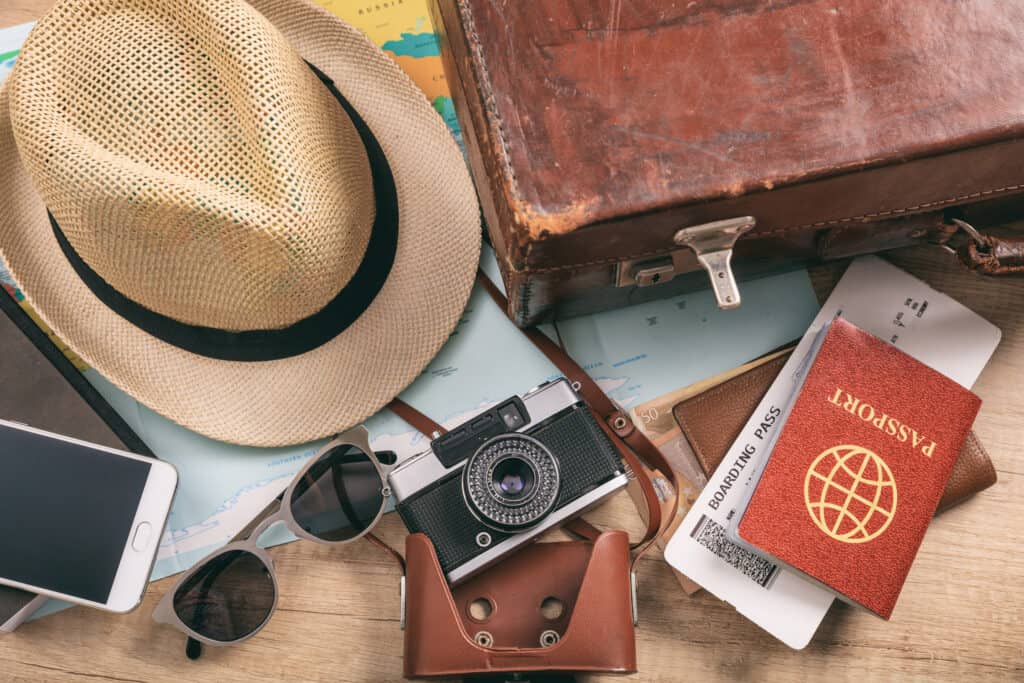
The Best Apps and Resources for Language Learning
If you are interested in learning a new language, here are a few apps and resources I think may be the most helpful to you:
As I mentioned in my post on Spanish p hrases , practicing is really key to feeling comfortable using a new language. You can practice with native speakers by using my favorite language resource, iTalki . On this site you can practice with a tutor, formal teacher, or others just seeking to do a language exchange (for free!). It is hands down the best way to expand your language skills.
This app is best for improving your reading comprehension. And believe it or not, improving your reading comprehension is maybe the best way to consistently expand your vocabulary. (Consider how babies learn languages). On this app, you are provided with videos that come with captions to help you pick up on the vocabulary that you hear. Try Lingopie today !
While I can’t recommend Duolingo alone for learning a langauge, I recommend using this free app to expand and practice your vocabulary in a new language. Note, there is a paid option, but I think the free version is all that you need with this one.
Even better for building vocabulary is Drops, in my opinion. It has a variety of more real-life categories that you can opt for yourself to learn from. You do have to pay an annual fee, but it is absolutely worth it.
Google Translate
If you don’t have time to learn a language before you travel . I recommend using one of the best translation apps out there – Google Translate. This app does wanders for picking up live conversations so you can chat with people like taxi drivers or other new friends in the local language. Even if it is a little indirect.
FAQs About Travel in Different Languages
The root word for “travel” is derived from the Old French word “travailler,” which means “to work, labor, toil, or journey.” Interestingly, it originally denoted the strenuous nature of medieval journeying. Hence, travel inherently carries the essence of a laborious journey.
The word for longing for travel is “wanderlust.” Wanderlust can also be described as a wistful longing for travel as well.
The Old English word for travel is “faran,” which essentially means to journey or to go. It conveys the sense of moving from one place to another, much like the modern term ‘travel’.
Journey Voyage Tour Trip Expedition Trek Roam Navigate Wander Cruise
Travel itch Fernweh Desire to travel Travel bug Itchy feet Globetrotting Adventurousness Nomadism Exploration obsession Journeying passion
In Summary | Travel in Different Languages
I hope that this post has inspired you to explore languages more, or at the very least, inspired you to experience a bit of wanderlust. Learning how to say words like travel in different languages is the start to breaking down language barriers and is a great way to get to know new people in any new place. I hope you will now begin to channel your love of travel into something fruitful, such as learning a second language.
More Words in Different Langauges
- I Love You in Different Languages
- Goodbye in Different Languages
Interested in Learning More? Check Out these Travel Language Guides:
- Spanish for travel
- Portuguese for travel
- Japanese for travel
- Greek for travel
- French for travel
- Italian for travel
- Thai for travel
- Languages and travel
Don’t forget to pin this for later!

Christen Thomas is the founder of TravelWanderGrow, established in 2018. She has lived abroad and traveled extensively to over 30 countries. In addition, she is a certified Travel Advisor and is an expert in planning trips focused on city history and culture. As a frequent traveler, she also shares tips on how to prepare to travel well and how to save money while doing so.
Leave a Reply Cancel reply
Your email address will not be published. Required fields are marked *

How to Start and Keep a Travel Journal: A Guide to Travel Diaries
When you capture your memories, you’ll never lose them.
Traveling is a transformative and enriching experience – and one of the best ways to capture and preserve those memories is by keeping a travel journal. A travel journal serves as a personal record of your adventures, reflections, and emotions throughout your journey.
A travel journal offers numerous benefits and can become a cherished keepsake for years to come. Here is a comprehensive guide on how to start and keep a travel journal – and how to make the most of your journaling experience.
Why Keep a Travel Journal?
Keeping a travel journal is a gateway to a treasure trove of memories , self-reflection , and creative expression . From preserving the details of your journeys to unlocking personal growth, a travel journal is definitely worthwhile. Let’s uncover the magic of travel journaling together.
Preserving Memories
Preserving memories is crucial when it comes to maintaining a travel journal. It is essential to capture the moments and experiences during your trips. Here are some techniques to effectively preserve your memories:
– Write comprehensive descriptions of the places, individuals, and activities you encounter. It is important to be vivid and use expressive language in your writing.
– Capture photographs of the landscapes, landmarks, and memorable moments you come across.
– Keep tickets, receipts, and other mementos from your travels as keepsakes.
– Maintain a daily log of your activities, thoughts, and emotions throughout the journey.
– Consider recording voice memos to encompass ambient sounds and conversations, which will add depth to your memories.
– Document the people you meet on your journey, including their names and stories .
Incorporating these practices into your travel journal will allow you to effectively preserve your memories for the years to come.
Self-Reflection and Personal Growth
Self-reflection and personal growth are essential aspects of travel journaling. When you take the time to introspect and process your experiences and emotions, you not only gain a deeper understanding of yourself but also foster personal growth .
Here are five effective ways to enhance self-reflection and personal growth through your travel journal:
1. Embracing emotions : Use your journal to describe your feelings and emotions during your travels. This practice can help you process and comprehend your emotional responses.
2. Contemplating experiences : Take the opportunity to write about the impactful moments, challenges, and lessons you encounter. By doing so, you can gain valuable insights, learn, and grow.
3. Recognizing strengths and weaknesses : Assess your reactions to various situations and identify areas where you excel as well as struggle. This self-awareness will optimize your personal growth.
4. Establishing personal goals : Utilize your journal to set realistic development goals for yourself. For instance, if you tend to be shy, challenge yourself to interact with locals. Regularly reflect on these goals and track your progress.
5. Documenting achievements : Take the time to celebrate your accomplishments in your journal. Whether it’s conquering fears, trying new activities, or pushing yourself out of your comfort zone, recognizing these achievements will boost your self-confidence and inspire further growth.
By actively engaging in self-reflection and personal growth through your travel journal, you can maximize your travel experiences and create positive changes that spill over into various aspects of your life.
Creative Outlet
Travel journaling provides you with a valuable creative outlet that allows you to express yourself and document your experiences in unique ways.
There are several methods through which travel journaling serves as a creative outlet:
1. Writing: You can vividly describe your adventures, including the places you visit, the people you meet, and the emotions you experience. By skillfully using descriptive language, you can bring your experiences to life on the pages of your journal.
2. Drawing and Sketching: If you possess artistic abilities, you can visually represent your travels through sketches and drawings. You have the opportunity to capture breathtaking landscapes or intricate architectural wonders.
3. Collages and Scrapbooking: Incorporating various mementos such as pictures, tickets, and postcards can elevate your travel journaling experience. By artfully arranging these items, you can create visually appealing collages that effectively capture your journey.
4. Mapping and Planning: You may enjoy incorporating maps and itineraries into your journals. By using different colors, markers, and symbols, you can highlight your routes, points of interest, and even plan future adventures.
5. Poetry and Prose: Travel journals offer a platform for you to explore your emotions and experiences through poetry, short stories, and song lyrics. This allows you to express your thoughts and reflections in a profound and meaningful way.
Incorporating a creative outlet into travel journaling enhances the overall experience, enabling you to express yourself artistically. It adds a personal and unique touch to your journals, reflecting your unique personality and perspective.
Editor’s Note : You don’t have to be a famed artist to enjoy adding artistic touches to your journal – even a postcard can help you capture a moment or memory, it’s art!
How to Start a Travel Journal?
You might be wondering, “Where do I start?”
You’ll need to start with a journal and a journey. Consider the following guidelines as you choose and prepare to record an adventure you’ll never forget. Are you ready to dive into the world of travel journaling and embark on an adventure of self-expression and reflection?
Choose the Right Journal
When selecting a journal, it’s important to choose one that suits your needs and preferences. Consider the following factors:
Consider these factors to choose the right journal that meets your needs and enhances your travel journaling experience.
Determine Your Journaling Style
When it comes to travel journaling, determine your style. This helps capture your travel experiences authentically and true to your voice. Consider these factors when determining your style:
1. Writing or Visual: Decide if you prefer writing or capturing your thoughts and experiences through drawings, sketches, or collages. Some may prefer a combination.
2. Length and Detail: Consider how much detail you want in your journal entries. Do you enjoy writing long and descriptive passages or shorter, more concise entries? This determines entry length and depth.
3. Structure: Think about if you prefer a structured journal with a specific format like a daily log or reflection on specific trip aspects. Alternatively, you may prefer a free-flowing and spontaneous approach.
4. Multimedia Elements: Decide if you want to include additional elements like travel photos, tickets, or souvenirs. These bring memories to life and add a visual dimension.
Remember, your journaling style can evolve and change over time. The important thing is to find a resonating style that effectively captures your travel experiences. Experiment with different approaches and embrace the freedom to authentically express yourself. Happy journaling!
Gather Essential Supplies
To gather essential supplies for your travel journal, follow these steps:
1. Choose a journal: Select a journal that fits your style and preferences. Consider factors like page count, paper thickness, and lay-flat design for easy writing.
2. Pens and markers: Bring a variety of writing tools , including pens, markers, and highlighters, to add color and creativity to your journal.
3. Sticky notes and adhesive: Pack sticky notes or adhesive to incorporate extra elements like tickets, postcards, or photos into your journal. This will make your journal visually appealing.
4. Travel accessories: Consider including travel-specific items such as a small pouch for souvenirs, a ruler for straight lines or measurements, or a pocket-sized travel guide for reference.
5. Accessories for organization: Keep your journal organized with accessories like paper clips, binder clips, or page flags. These can be useful for marking important pages or sections.
6. Glue or tape: If you plan to add larger or heavier items to your journal, such as brochures or maps, bring glue or tape to securely attach them.
7. Travel-friendly storage: Make sure you have a sturdy and compact bag or case to store all your journaling supplies in one place. This will make it easier to access them while traveling.
Remember, the purpose of gathering essential supplies is to enhance your journaling experience and creativity. Consider which items will be most useful and enjoyable for you personally.
What to Include in Your Travel Journal?
Keeping a travel journal is the perfect way to capture the essence of your adventures. You have a lot of options when it comes to what to include – especially if you’re detailed oriented. Here are some of the major players.
Daily Itinerary and Activities
When traveling and keeping a journal, you may want to document your daily itinerary and activities. Here are some key points to consider:
– Record your daily activities: Write down the places you visit, the attractions you see, and the activities you engage in each day. This helps you remember the details and experiences.
– Date and timestamp your entries: Include the date and time of each activity in your journal. This creates a chronological account of your journey.
– Include details and descriptions: Be descriptive in your writing, capturing the sights, sounds, and smells of each activity. Use vivid language to paint a picture of your experiences.
– Add personal reflections: Alongside your itinerary, include your thoughts and feelings about each activity. Reflect on how the experience impacted you and what you learned from it.
– Document any challenges or surprises: Note any unexpected obstacles or pleasant surprises you encountered during your activities. This adds depth and authenticity to your travel narrative.
– Attach mementos: Include tickets, brochures, or other physical items related to your daily activities. These mementos bring back memories and enhance your journal entries.
Remember, the goal of documenting your daily itinerary and activities is to create a comprehensive record of your trip. By capturing the details and emotions of each day, you’ll be able to relive your travel experiences in the future. Happy journaling!
Impressions and Emotions
Impressions and emotions are crucial aspects when capturing the essence of travel experiences. By actively describing and reflecting on them, you have the ability to construct a vibrant and meaningful travel journal.
- To start, describe your impressions by taking note of the sights, sounds, smells, and tastes that stand out to you when visiting a new place. Utilize descriptive language to effectively convey the atmosphere and essence of the location. For instance, instead of simply stating “the beach was beautiful,” vividly describe the vibrant colors of the sunset reflecting off the water, the delightful scent of the salty breeze, and the comforting sensation of warm sand between your toes.
- Describe the enticing taste of local delicacies, the texture of cobblestone streets beneath your feet, or the vibrant array of colors at a bustling market. Engaging multiple senses not only makes your journal entry more immersive but also evokes a more vivid recollection .
- It is important to reflect on your emotions while traveling. Travel often evokes a range of emotions, such as excitement, awe, nostalgia, and introspection . Write about how certain moments or experiences made you feel. Did you experience a surge of adrenaline while embarking on a chalenging hiking trail? Were you filled with a sense of wonder and reverence when visiting a historic site? By capturing your emotions in words, you are able to evoke and relive those unforgettable moments while comprehending their impact.
- Express your personal connections in your journal. Share how you connected with the individuals you encountered during your journey. Write about the meaningful conversations you had, the friendships you formed, or the cultural exchanges that touched your heart. These personal connections and interactions leave a lasting impression and add depth to your travel journal.
- Reflect on your personal growth as a result of your travels. Travel provides unique opportunities for self-discovery and personal development. Contemplate how your experiences challenged you, pushed you out of your comfort zone, or broadened your perspectives. Write about the valuable lessons you learned and how you have grown as an individual. Reflecting on personal growth helps to further enrich your travel journal.
By prioritizing and focusing on impressions and emotions in your travel journal, you can create a comprehensive and meaningful record of your adventures. This record will effectively transport you back to those treasured moments whenever you revisit your journal.
Photos, Tickets, and Souvenirs
Photos, tickets, and souvenirs are important for travel journals to capture and preserve trip memories. Here are reasons why these items are valuable:
– Photos: Capture landscapes, views, and moments of travel. They serve as visual reminders of places and experiences.
– Tickets: Save tickets from attractions, museums, shows, or events attended during the trip. These tickets transport you back to the exact date and time of something new and exciting.
– Souvenirs: Physical mementos that evoke powerful memories of travel. They can be notes, postcards, shop receipts, or even food wrappers. Souvenirs remind you of the culture, traditions, and unique aspects of the destination.
By including photos, tickets, and souvenirs, you create a comprehensive record of your experiences. These items add depth and richness to your written descriptions , allowing you to relive your adventures more tangibly. Photos serve as visual aids to jog your memory and bring back specific details of each location visited. Similarly, tickets and souvenirs help recall specific events or attractions interacted with during the trip.
Tips for Effective Travel Journaling
Looking to up your travel journal game? Say goodbye to mundane travel entries and hello to captivating narratives that will transport you and your readers back to your adventures in a heartbeat. Ready to unleash your inner storyteller and create a travel journal that will truly stand the test of time?
Here are our top tips.
Write Regularly
To maximize your travel journal’s effectiveness, it is crucial to write regularly. By consistently recording your experiences, thoughts, and feelings, you can capture the essence of your travels and create a vibrant and meaningful record.
1. Set a schedule : Establish a routine for journaling, whether in the evening before bed or during breakfast each morning. By incorporating journaling into your daily routine, you ensure that you don’t forget to record important moments and details.
2. Make it a habit : Treat journaling as a regular practice, like brushing your teeth or exercising. By prioritizing journaling and making it a non-negotiable part of your day, you are more likely to write regularly and consistently – at home or away.
3. Write in the moment : Don’t wait too long before jotting down your experiences. Memories fade quickly, and by writing while the details are still fresh in your mind, you can capture the nuances and emotions of each adventure.
4. Keep it simple : You don’t need to write a lengthy essay every time you journal. Sometimes, a few sentences or bullet points can be enough to jog your memory and capture the essence of the moment. Focus on the key highlights and impressions that stand out to you.
5. Use prompts and writing techniques : If you’re feeling stuck, use prompts or writing techniques to stimulate your creativity. Try freewriting, list-making, or describing a specific sensory experience. This can help generate ideas and deepen your journal entries.
By writing regularly, you will cultivate a substantial collection of travel memories for future reflection. So, make it a habit, be consistent, and enjoy the process of documenting your adventures. Happy journaling!
Be Descriptive and Detailed
Keeping a travel journal requires being descriptive and detailed. This allows you to capture the essence of your travel experiences and create vivid memories. Besides sharing sensory descriptions and your emotions and responses , here are some tips to help you be descriptive and detailed in your travel journal:
1. Include colorful anecdotes : Share interesting stories, encounters, or observations that stood out to you during your travels. These anecdotes add depth and personality to your journal entries.
2. Add context : Provide background information about the places you visit. This can include historical facts, cultural traditions, or local customs. It helps create a richer understanding of the destinations you explore.
3. Use quotes and dialogue : Incorporate conversations you had with locals or fellow travelers, as well as any memorable quotes or phrases that resonated with you. This adds authenticity and liveliness to your journal.
Being descriptive and detailed in your travel journal creates a personal time capsule of your adventures . So, grab your journal, embrace your inner storyteller, and let your words transport you back to those incredible moments you experienced while traveling.
It can also enhance memory retention – writing about experiences in detail helps solidify memories and improve recall.
Keeping Your Travel Journal Safe
When it comes to keeping your travel journal safe, there are a couple of important considerations to keep in mind. With the increasing use of technology, finding the right methods for digital backup is crucial. Safeguarding your physical journals from loss or damage is also a key aspect of preserving your travel experiences.
Let’s explore the best practices for keeping your travel journal safe and secure!
Digital Backup
When it comes to keeping your travel journal safe and secure, digital backup is essential. Here are some options to protect your travel journal:
- Cloud Storage: Use Google Drive, Dropbox, or iCloud to upload digital copies of your travel journal. This way, even if you lose or damage your physical journal, you can always access your entries from any device with an internet connection.
- External Hard Drive: Backup your travel journal regularly with an external hard drive. These devices have large storage capacities, allowing you to store written entries, photos, and videos.
- USB Flash Drive: Keep a USB flash drive specifically for your travel journal backups. These portable devices are compact and easy to carry, ensuring you always have a backup copy of your journal.
- Email Yourself: Send digital copies of your journal entries to your email address. This serves as a quick and convenient backup method accessible from anywhere.
In addition to these options, it is advisable to password-protect your digital backups for added security. Remember to regularly update your backups and store them separately from your physical journal to minimize the risk of losing all your travel memories.
By implementing one or more of these digital backup methods, you can have peace of mind knowing that your travel journal is safeguarded, and your cherished memories are securely preserved. So go ahead and embark on your next adventure, knowing that your travel journal is backed up and ready to capture every moment.
Protecting Physical Journals
Protecting physical journals is crucial to ensure the safety and longevity of travel memories. To safeguard your travel journal, consider the following tips:
– Use a sturdy cover : Opt for a durable journal , like a hardcover or leather-bound notebook , to prevent tearing or damage.
– Waterproof protection : Invest in a waterproof journal cover or use a plastic sleeve to shield your journal from spills or rain, preserving your writing – especially if you’re hiking or camping with it.
– Keep it separate : Avoid storing your journal with sharp objects or liquids. Use a dedicated pouch or compartment in your bag to minimize accidents.
– Store in a safe place : When not in use, store your journal in a secure and dry location , away from sunlight and extreme temperatures to prevent fading or warping.
– Back it up : Make digital copies or scans of your journal pages to mitigate the risk of loss or damage. Store them securely on your computer, external hard drive, or cloud storage.
– Handle with care : Use clean hands and gentle handling to preserve the binding and keep the pages intact.
By following these precautions, you can protect your travel journal and ensure it remains a treasure of memorable experiences for years to come.
Interesting fact : The oldest surviving travel diary dates back to the 2nd century AD. It was written by a Roman soldier named Aulus Plautius , who documented his exploration of Britain !
Sharing Your Travel Journal
When sharing your travel journal, follow these steps to effectively communicate your experiences to others so they can experience your adventure with you all over again.
– Organize your entries : Arrange your journal entries in a logical order, either chronologically or by location. This helps readers follow your journey and understand its progression.
– Include visuals : Alongside your written entries, add photographs, postcards, or sketches that capture the essence of your travels. Visuals enhance readers’ understanding and create a more immersive experience.
– Be descriptive : Use vivid and detailed language to describe the places, people, and experiences you encountered. Paint a picture with your words so that readers can feel like they are there with you.
– Share personal insights : Include your thoughts, reflections, and emotions in your journal entries. This adds a personal touch and allows readers to connect with your experiences on a deeper level.
– Consider your audience : Think about who you want to share your journal with. If it’s a close group of family and friends, you can be more intimate and less formal in your writing. If you plan to publish or share your journal with a wider audience, make sure your tone and content are appropriate.
– Set boundaries : While sharing your travel experiences can be exciting, respect the privacy of others. Be mindful of what you include in your journal and obtain consent before sharing personal stories or photographs involving other individuals.
Sharing your travel journal allows you to relive your adventures and inspire others to explore the world. So grab your pen, gather your memories, and let your words transport you and your readers to the incredible places you’ve visited.
Frequently Asked Questions
1. how can a travel journal be beneficial for business purposes.
By keeping a travel journal, you can jot down ideas and inspiration for business ventures during your trips. It allows you to document potential collaborations, networking opportunities, and innovative concepts that can be implemented in your work.
2. What are some pre-departure ideas to spark travel journal ideas?
Before leaving for your trip, consider researching the history and culture of your destination. This can help spark ideas for what to include in your travel journal, such as unique landmarks, local customs, or traditional cuisine.
3. How can a travel journal help with post-holiday ideas?
After your trip, reviewing your travel journal can jog your memory and inspire ideas for future vacations. You can reflect on your favorite experiences, places you want to revisit, or even new destinations you discovered during your previous trip.
4. What are some different versions of travel journaling?
There are various ways to approach travel journaling, including “just the facts,” storytelling, envelope-style, scrapbook style, and sketchbook. Each version offers a unique way to document and remember your trips, allowing you to choose the style that suits you best.
5. Can a travel journal be stored digitally?
Absolutely! In modern life, digital travel journal options are available. You can use diary software or dedicated travel journal apps to create a solid collection of your travel memories. Just make sure to backup your digital journal to keep it safe.
6. Is it essential to keep a separate notebook for each trip?
It is not necessary to have a separate notebook for each trip. You can use a single travel journal and section it off for various travels. This way, you can maintain one comprehensive journal that includes all your travel adventures.
Brooks Manley

Creative Primer is a resource on all things journaling, creativity, and productivity. We’ll help you produce better ideas, get more done, and live a more effective life.
My name is Brooks. I do a ton of journaling, like to think I’m a creative (jury’s out), and spend a lot of time thinking about productivity. I hope these resources and product recommendations serve you well. Reach out if you ever want to chat or let me know about a journal I need to check out!
Here’s my favorite journal for 2024:

Gratitude Journal Prompts Mindfulness Journal Prompts Journal Prompts for Anxiety Reflective Journal Prompts Healing Journal Prompts Cognitive Behavioral Therapy Journal Prompts Mental Health Journal Prompts ASMR Journal Prompts Manifestation Journal Prompts Self-Care Journal Prompts Morning Journal Prompts Evening Journal Prompts Self-Improvement Journal Prompts Creative Writing Journal Prompts Dream Journal Prompts Relationship Journal Prompts "What If" Journal Prompts New Year Journal Prompts Shadow Work Journal Prompts Journal Prompts for Overcoming Fear Journal Prompts for Dealing with Loss Journal Prompts for Discerning and Decision Making Travel Journal Prompts Fun Journal Prompts
How to Start a Bullet Journal + 25 Bullet Journal Ideas
You may also like, a guide to gratitude and mindfulness journaling + 25 prompts.
What is Creative Intelligence? An Introduction
What animal represents creativity, leave a reply cancel reply.
Save my name, email, and website in this browser for the next time I comment.
- Productivity
- Favorite Journals
What Is a Travel Journal + How to Make One with Examples
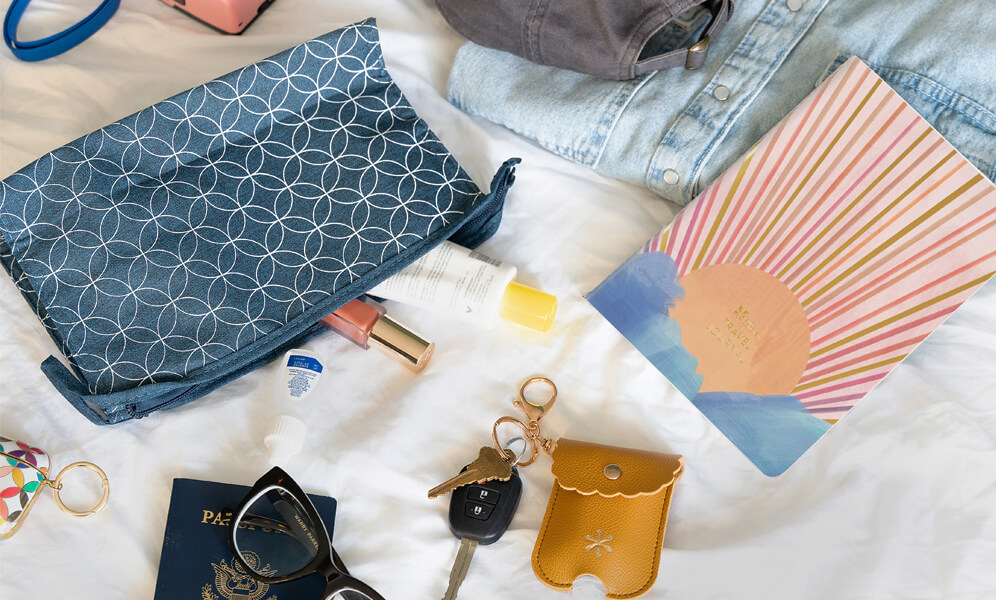
Traveling to new places and journaling about your exciting and enriching experiences is beyond rewarding. Whether you're exploring a bustling city, immersing yourself in nature's wonders, or embarking on a cultural adventure, capturing your travel experiences is a great way to preserve memories and reflect on your journey. One popular and creative way to document your travels is through a travel journal . In this article, we'll cover what a travel journal is, the benefits of keeping one, how to choose the best travel journal among different types, and provide you with tips and examples on how to make your own.
Ready to discover how to capture your travel experiences in different places, explore creative travel journal ideas and travel journal prompts, and more? Let the adventure begin!
What is a Travel Journal?
A travel journal is a personal diary that allows you to record your thoughts, feelings, and experiences during your travels. It serves as a visual and written account of your adventures, providing you with a tangible keepsake that you can cherish for years to come. Unlike a regular journal, a travel diary focuses specifically on your journeys, including details about the different places you visit, the people you meet, the food you try, and the sights you see.
Benefits of Keeping a Travel Journal
Keeping a travel journal offers numerous benefits beyond simply documenting your experiences. Here are some additional reasons why you should consider starting one:
1. Emotional and Mental Well-Being
Journaling has been shown to have positive effects on emotional and mental well-being . When you write about your travel experiences, you have the opportunity to process and reflect on your emotions, helping you gain a deeper understanding of yourself and your reactions to different situations via your journal entries. It can be a therapeutic outlet for releasing stress, anxiety, or even excitement, allowing you to better manage your emotions throughout your journey.
2. Enhanced Memory Retention
Writing about your travels helps improve memory retention. By actively engaging with your experiences and recording them in detail, you reinforce the neural connections related to those memories. This makes it easier to recall specific moments, sights, sounds, and even the feelings associated with them in the future. Your travel diary becomes a valuable tool for preserving and retrieving cherished memories.
3. Cultural Exploration and Appreciation
A travel journal encourages you to be more observant and attentive to the details of the places you visit. It prompts you to delve deeper into the local culture, traditions, and customs. By documenting your interactions with locals, sampling regional cuisine, and exploring hidden gems, you develop a greater appreciation for the unique aspects of each destination. Your journal becomes a testament to the richness and diversity of the world around you.

4. Personal Growth and Self-Reflection
Writing in a travel diary allows for introspection and personal growth. As you reflect on your experiences, you gain insights into your own values, beliefs, and perspectives. You may discover new passions or interests, challenge preconceived notions, or develop a greater sense of empathy and understanding for others. The process of self-reflection through journaling can lead to personal transformation and a deeper connection to the world.
5. Travel Planning and Preparation
Your travel journal can serve as a practical resource for future trips. By documenting your itineraries, accommodations, transportation details, and recommendations, you create a valuable reference guide that covers your experiences more fully. You can refer back to your journal to jog your memory or provide recommendations to fellow travelers. It becomes a repository of knowledge that can streamline the planning process for future adventures.
6. Connection with Loved Ones
Sharing your travel journal with friends, family, or future generations can be a meaningful way to connect and bond. Your journal becomes a storytelling tool, allowing others to experience your journey vicariously through your words, sketches, and photographs. It can spark conversations, ignite curiosity, and inspire others to embark on their own adventures.
7. Creative Expression
Engaging in the creative process of journaling stimulates your imagination and artistic abilities. Whether you're writing prose, sketching landscapes, creating collages, or experimenting with different art mediums, your travel diary becomes a canvas for self-expression. It encourages you to think outside the box, explore new artistic techniques, and develop your creative skills.
Keeping a travel journal goes beyond simply recording your experiences. It has profound benefits for your emotional well-being, memory retention, personal growth, and cultural appreciation. It serves as a tangible reminder of your adventures, a tool for planning future trips, a means of connecting with others, and a creative outlet for self-expression. So, grab a journal and embark on your journey of exploration and self-discovery through travel journaling.
Types of Travel Journals

There are different journals for just about any goal or activity you can think of – from travel journals to fitness journals , from gratitude journals to garden journals , and more. Similarly, there are various types of travel diaries to suit different preferences and styles. We cover the best travel journals below so you can find one perfect for you.
1. Guided Travel Journals
Guided journals provide travel journal prompts and structured sections to help you capture specific aspects of your journey. Guided journals often include questions, blank pages to fill in, and guided activities to guide your journaling process. Using a guided journal or planner , can ensure you cover all the essentials, without missing any crucial details you’ll want to revisit later.
2. Traditional Handwritten Journals
These are classic journals or notebooks with blank pages where you can freely write, draw, or glue mementos. Traditional journals offer the most flexibility in terms of customization for creative journal entries.
3. Photographic Travel Journals
For those who prefer visual storytelling, a photographic travel journal focuses on capturing moments through photographs. You can include pictures alongside brief descriptions or captions to narrate your journey visually.
4. Scrapbook Travel Journals
Scrapbook-style journals combine photographs, tickets, postcards, and other memorabilia with handwritten notes and decorative elements. They provide a visually appealing way to preserve your travel memories.
5. Sketchbook Travel Journals
If you have artistic inclinations, a sketchbook journal allows you to sketch and paint scenes, landmarks, and people you encounter during your travels. It's a great way to capture the essence of a place through your own artwork.
6. Digital Travel Journals
In the digital age, many people opt for digital travel journals, using apps or online platforms to document their adventures. Digital journals offer the convenience of easy editing, multimedia integration, and the ability to share your journey with others online.
7. Travel Bullet Journals
A popular trend in journaling, travel bullet journals combine organization and creativity. Based on the bullet journaling system, these journals use symbols, icons, and trackers to help you plan and record your travels. You can create sections for itineraries, packing lists, daily logs, and more, all while adding artistic touches and personalization.
You can also use a monthly planner with ample note pages and customize it as a travel calendar journal.
Whether you prefer the structure of guided journals, the freedom of traditional handwritten journals, the visual impact of photographic or scrapbook journals, the artistic expression of sketchbook journals, the convenience of digital journals, or the organization of travel bullet journals, there's a type of travel journal that will resonate with you and enhance your travel experiences. Choose the one that suits your style and embark on a journey of creativity and self-expression.
How to Make a Travel Journal
Now that you have an idea of the different types of travel journals, let's explore how to make your own.
1. Selecting the Right Journal
Consider the type of journaling experience you desire. If you prefer writing and sketching, a traditional blank-page journal or sketchbook might be ideal. If you want structure and guidance, opt for a guided travel journal. If you're tech-savvy, explore digital journaling options.
2. Gathering Essential Supplies
Depending on the type of journal you choose, gather supplies such as pens, pencils, markers, glue, scissors, washi tape, stickers, and any other decorative elements you'd like to incorporate. If you're going digital, ensure you have a suitable device and any necessary apps or software.
3. Planning Your Journal
Before your trip, plan how you want to organize your journal. Consider creating sections for different aspects like itineraries, accommodation, food, and sightseeing. This will help you stay organized and make it easier to find information later.

4. Documenting Your Journey
During your trip, actively engage in your journaling process with regular (yet not restrictive or rigid) journal entries. Write about your daily experiences, jot down interesting conversations, glue in ticket stubs or postcards, and take photographs to complement your entries. Let your creativity flow and capture the essence of each moment.
Travel Journal Page and Layout Examples

The layout and organization of your travel journal pages play a crucial role in bringing your travel experiences, from all the different places you’ve visited, to life. By incorporating various elements and sections, you can create a visually appealing and informative journal that captures the essence of your journey. From practical pages for itineraries and packing lists to creative spreads for reflections and bucket lists, here are some ideas to help you design engaging and meaningful pages for your travel diary.
1. Packing List and Pre-Trip Planning Pages
Dedicate a page or spread to jot down your packing list and pre-trip preparations. Include essential items, travel tips, and any special considerations for the destination. You can even add checkboxes or symbols to mark off items as you pack, ensuring you don't forget anything important.

You may also want to check out these helpful travel and packing tips .
2. A List of Local Words and Phrases
Learning a few basic words and phrases in the local language can greatly enhance your travel experience. Create a page dedicated to practicing and referring to these words and phrases. Include translations, pronunciation guides, and space to practice writing them. This page can be a helpful tool for connecting with locals and immersing yourself in the local culture.
3. Itinerary Pages
Design pages dedicated to your daily itineraries. Include the places you plan to visit, opening hours, transportation details, and any additional notes or reservations. You can add maps, photographs, or illustrations to make the page visually appealing and easy to navigate.
4. Accommodation and Restaurant Reviews
Reserve pages to review and rate the accommodations and restaurants you experience. Include details like the location, ambiance, service, and any standout dishes. You can even attach business cards, menus, or photographs to accompany your reviews. These pages will not only serve as a reference for future trips but also help fellow travelers discover hidden gems.
5. Post-Trip Reflection and Wrap-Up
Allocate space in your journal for post-trip reflections. Create pages to summarize your overall experience, highlight your favorite moments, and reflect on the lessons learned during your journey. Include photographs, sketches, or quotes that capture the essence of your adventure. These reflection pages will serve as a reminder of the growth and memories you gained from your travels.
6. Travel Bucket List
Create a dedicated page to list destinations, landmarks, or experiences you aspire to visit or accomplish in the future. You can divide the page into different categories like countries, UNESCO World Heritage Sites, or adrenaline-fueled activities. This page will serve as a source of inspiration and motivation for your future travels.
7. Travel Budget, Savings Goals, and Tracking
If budgeting is important to you, design pages to track your travel expenses, savings goals, and tips for saving money during your travels. Create tables or graphs to visually represent your budget and savings progress. These pages will help you stay accountable and ensure you're making the most of your financial resources.
Your travel diary is a personal and creative space to capture the memories, emotions, and experiences of your journeys. Through carefully designed pages and layouts, you can transform your journal into a visual and written narrative of your adventures. Whether you choose to incorporate practical elements like itineraries and packing lists or focus on creative expressions like reflections and bucket lists, the possibilities are endless. Let your imagination guide you as you create pages that reflect your unique travel style and personality. With each turn of the page, your travel diary will become a treasure trove of cherished memories and a gateway to relive your journeys again and again.
Creative Travel Journaling Ideas and Prompts

Stuck on what to write or include in your travel diary? Here are some creative travel journal ideas and travel journal prompts to get you started:
- Write a letter to your future self reflecting on your travel experiences and what you hope to remember.
- Describe the scents, sounds, and tastes that stand out in each place you visit.
- Create a "People You Meet" page, where you can jot down brief descriptions or draw portraits of interesting individuals you encounter during your journey.
- Write a short story or poem inspired by a specific location or experience.
- Make a to-do list of activities or experiences you want to accomplish at each destination. Challenge yourself to complete as many as possible and check them off as you go.
- Write a gratitude list, noting the things you're grateful for during your travels. It could be the stunning sunsets, the kindness of locals, or the serendipitous encounters.
A travel diary is a beautiful way to document and cherish your travel experiences. Whether you opt for a traditional handwritten journal, a photographic account, or a digital platform, the process of journaling will enhance your journey and provide a lasting memory of your adventures. Experiment with different styles, layouts, and prompts to make your travel journal uniquely yours. So, grab a journal and start capturing your travel memories today!
Join the Conversation
Newsletter signup, shop now. pay in 4. always interest-free..
Add your favorites to bag
Select Afterpay at Checkout
Log into or create your Afterpay account, instant approval decision
Your purchase will be split into 4 payments, payable every 2 weeks
You must be over 18, a resident of the U.S. and meet additional eligibility criteria to qualify. Late fees may apply. Estimated payment amounts shown on product pages exclude taxes and shipping charges, which are added at checkout. Click here for complete terms. Loans to California residents made or arranged pursuant to a California Finance Lenders Law license. © 2020 Afterpay
Pay in 4 interest-free payments
No impact on credit score and no late fees. Available for purchases of $30 to $1,500.
- Choose PayPal at checkout to pay later with Pay in 4 .
- Complete your purchase with a 25% down payment.
- Use autopay for the rest of your payments. It's easy!
Pay in 4 is available to consumers upon approval for purchases of $30 to $1,500. Pay in 4 is currently not available to residents of MO or NVMissouri or Nevada. Offer availability depends on the merchant and also may not be available for certain recurring, subscription services. When applying, a soft credit check may be needed, but will not affect your credit score. You must be 18 years old or older to apply. PayPal, Inc.: Loans to CACalifornia residents are made or arranged pursuant to a CACalifornia Financing Law License. GAGeorgia Installment Lender Licensee, NMLS #910457. RIRhode Island Small Loan Lender Licensee. NMNew Mexico residents:
Find more disclosures related to Pay in 4.
Travel Journal: Ideas, Tips, and How To Write a Travel Diary
- Travel Journal
Traveling has the potential to be wildly fulfilling. It exposes you to new cultures, different perspectives and unique experiences. The further you travel the more you are pushed out of your comfort zone. And the more you are pushed out of your comfort zone, the more you learn about yourself and the world around you.
One of the most popular types of journals is a travel journal. By having a travel diary, you can keep all these new experiences and knowledge in one place where you can reflect on them.
What is a travel journal?
Travel journals are a place where you can write about trips you have taken, what you learned during and the experiences you had. It is a collection of adventures, stories, memories and discovery. It doesn’t matter where you're going or who you’re traveling with, an online trip journal can come anywhere.
Why Write A Journal When Traveling?
There are many benefits of keeping a journal when traveling, but here are a few to start with:
Remember More
By writing down the things you want to do on your trip and the things you have done during it, you won’t forget the reasons you wanted to go and will remember more of your visit.
When traveling somewhere new, you will learn a lot about that place’s culture, customs and people. By having a place to write down your observations, you will absorb more of your surroundings.
Reflect More
A journal is a place to record new things you have discovered while exploring various places you visit. By having all these new findings in one place, you will be able to look back and reflect on what you have learned and apply it to other parts of your life.
How To Write Travel Journals: 5 Tips To Get The Most Out Of Your Journaling
You don’t need to be traveling to Timbuktu to write a travel diary. Your writing can start with a family vacation or a weekend getaway. All you need is a destination and your holiday journal can begin!
1. Use your journal to plan your trip
Your trip journal can begin before your trip has even started. Use your journal to start planning the things you want to do. It can be anything from a cool restaurant you want to eat at, a hike you want to go on or different sights you want to see. Write down whatever is on your trip check-list, so you don’t forget it.
Once you know what you want to do, do some research and figure out the best way to do it. If you want to go see a special monument, figure out the best way to get there and put it in your journal. If you want to do some cool activities, write down the contact information of the people, places or tours that facilitate them. Your journal is also a great place to keep the contact information of your accommodations and transportation.
2. Write about what you imagine it will be like
Sometimes when you travel, your destination is wildly different than what you expected. Maybe you expected the local food to be bad and it turned out to be delicious. Maybe you imagined the town to be smaller than it actually is. Maybe you thought you would be more comfortable with the language. Whatever it is, think about writing it down before you arrive. It will be interesting to compare these predictions to what you actually experienced.
3. Write during your trip
It is always easier to remember things when they are fresh in your brain, so try and write as much as you can while traveling; every day if you can. Your journal entries don’t have to be long, but let them highlight what you feel was most important or exciting. How did you feel during your visit to the local market? What did you smell, taste and hear? Did you learn something new from the person you spoke to at the bar? Were you surprised by the clothes people were wearing? What was the view from the top of the mountain like? Before you go to bed, try and recall what you did that day, what you thought and how you felt. This will serve as a great way to remember more from your trip, but will also help you reflect and grow from what you encountered.
4. Add pictures to your journal
Even though your journal is meant for writing, pictures are still worth a thousand words. Combining pictures with your first-hand accounts of what they represent, or what happened when they were taken, will make for an even more comprehensive narrative of your travels. Don’t worry about glueing or taping anything either. Penzu allows you to upload pictures straight into your online travel journal, so you can keep your pictures and words connected and organized.
5. Write about your trip after you leave
Since you write about your trip before you arrive, you should also write about it after you leave.
- What was it like?
- What did you learn?
- What surprised you?
- What disappointed you?
It is important to reflect on your travels, so you can retain new understandings and apply them to future adventures. This is also a great way to learn about yourself, other people you may have travelled with and how you can grow. Step back from all the things you did and try to see the big picture. It may surprise you.
10 Travel Journal Ideas To Inspire You
The blank pages of your travel journal may not be serving as great inspiration, but your new trip should! Here are 10 travel journal ideas to get those creative juices flowing, kick-start your writing and help you get the most out of your travels. We hope these journal prompts help!
1. Why are you going?
Not every trip needs an explanation and not every vacation needs a justification. People travel for all sorts of different reasons or for no reason at all, but if your travel has purpose, write about it. Even if you’re traveling for the sake of it, that is a reason worth talking about too.
2. Write about your expectations.
As we mentioned above, expectations can wildly differ from reality, especially when going somewhere you’ve never been or going with someone you have never travelled with before. Jot down what you think the trip will be like, or hope it will be like.
3. What are you going to do?
Write about the things you want to do, the sights you want to see, the music you want to dance to, the food you want to taste. Writing it all down will get you excited and help you not to forget.
4. Write about the people.
Did you meet anyone new? Did you make a new friend? Were the locals welcoming? Did you learn something new from a stranger? Did you learn something new from a friend? People can really make a trip. Whether you came with them, or met them there, write about how the people you encountered affected your experience.
5. Write about the food.
Just because you call it your travel diary, doesn’t mean it can’t double as a food diary . If there are any foods you loved, dishes you hated or recipes you can’t live without, write them down to remember them all. Maybe some new fare you tried will influence your tastes when you return home.
6. The ups and the downs.
What did you like most about the trip? What did you like the least?
7. Write about yourself.
Reflect on the new experiences you had, what made you uncomfortable and what enticed you. Did you learn anything new about yourself on the trip? Did being somewhere else expose something you hadn’t seen in yourself before? Traveling can help people grow. Think about your journey and if it helped you grow in any way.
8. Write a travel guide.
If you knew friends were going to the same place, what would you tell them to do? Write down your recommendations and the stuff that should not be missed.
9. What would you have changed?
Is there anything about the trip you would have changed? Is there anything else you wish you did? Anything you wish you didn’t do? Write about your travels and how you can improve them for the next time you go away.
10. Where do you want to go next?
We all have a wish-list of places we want to go. Write yours down and try to start checking them off.
Using Penzu for Your Travel Journal
Penzu’s journal software allows you to access your journal from any computer, smartphone or tablet. Penzu will be your travel journal app ; all you need is your mobile phone or tablet and can write in in it, with or without wifi. You never have to miss an entry or forget a moment, as Penzu can come with you around the world. No internet necessary.
Now that you know what to write in a travel diary and how to write one, all you need to decide is where to go. Pick a place get start your online journal today!
There's no time like the present - start your free online journal today!

Loved by millions!
Get access to your diary wherever you are – download the free Penzu app for your all of your iOS and Android devices today!

Related Articles
Best Travel Journal App
Journal Basics
What is a Journal?
Journal Entries
Benefits of Journaling
Journal Types
How To Start and Write a Journal
- Journal Examples
- Journal Prompts
Ideas for Journals
Gratitude Journal
We'll explain what a gratitude journal is, how to figure out what you're grateful for (and why), and some guidelines for keeping one through Penzu.
How To Create a Reflective Journal
A reflective journal is the perfect place to jot down some of life's biggest thoughts.
5 Year Journal
A five year journal can help you remember the people and events that matter to you.
- Bible Journal
Bible journals can provide you with a therapeutic way to better cope with everyday situations, understand your feelings and establish a connection between your life and the biblical content.
- Pregnancy Journal
A pregnancy journal helps you remember important information about your health and make better decisions while you're expecting.
- Free Signup
- What is a Journal
- Reflective Journal
- Dream Journal
- Five Year Journal
- Secret Diary
- Electronic Diary
- Diary Templates
- Wedding Diary
- School Diary
- Health Diary
Copyright Penzu Inc. 2024

Welcome to the language page of Anja On Adventure! Here you will find language travel guide and basic phrases to know in different languages as a tourist. Having some knowledge of the local language is seen as a sign of respect and courtesy . Each basic language guide has more than 73 basic travel phrases included. They were created with the help of a native language speaker. My aim is to make travel as easy as possible for you, so I also included a FREE printable language guide for each of the languages. They also come with coloring pages you can put in a travel journal or use as a fun thing to do if traveling with kids . There are many language apps , but learning common travel phrases is still essential when traveling to a foreign country. That is why I’ve also included how to say useful words and phrases for traveling in 100+ languages. Like ‘Thank you’, ‘Hello’, ‘Happy Birthday’, ‘What is the WiFi password?’ and others. Interested in essential travel phrases? Have a look at this travel language guide with key phrases in a foreign language and have a carefree trip. Safe travels!
Basic Travel Phrases: Phrases to know when traveling abroad
Basic travel phrases include greetings, phrases for tourists when ordering food, common phrases when asking for directions, numbers and travel phrases for shopping, useful hotel phrases, and phrases to know when traveling in case of emergencies. Every language comes with FREE phrases for travel pdf.
Basic English language phrases

Hello! How are you? Thank you Please
Basic Slovenian language phrases

Zdravo! – Hello! Kako si? – How are you? Hvala – Thank you Prosim – Please

Words and Phrases for Tourists: How to say … in 100+ languages
Common words and phrases for tourists in English and 100 different languages. Useful phrases for travel and travel expressions in different languages spoken around the world. From Words like Hello, Please and Thank you, to Happy Birthday and Happy New Year, to travel phrases like What is the Wifi password and I love you.


Most Useful Languages for World Travel
Languages and traveling the world go hand in hand with each other. One doesn’t necessarily require the other, however, speaking the local language can completely transform your travel experience. This article will explore the most useful languages for world travel because languages really are key to having an authentic cultural experience and making new friends all over the world.
Tandem is not only for those on a language learning journey but also for those brave nomads and travelers out there. Speak the language of the locals and meet new people in the country you are traveling to. Download the Tandem app now to connect with people all across the world!

If you are reading this article, you are either one of the 360 million native English speakers or one of the billion people who speak it as a second language. Since the vast majority of the world's population has at least a basic understanding of the English language, you are spoiled for choice for your next travel destination. It is an official language in the United Kingdom, the United States, Jamacia, Down Under (Australia), New Zealand, Barbados and many more.
However, as a native English speaker, relying exclusively on widely-understood English travel vocabulary can sometimes mean missing out on the deeper cultural layers of each country you visit.
Learning Spanish will open up whole continents to you. It is one of the most spread languages around the world, and it is the official language in 21 different countries. To this day, there are approximately 500 million Spanish speakers worldwide. Being a Romance language, Spanish shares the same origins with Portuguese and Italian, for example, which leaves you open to building further language skills. Spanish is a perfect language to learn for travelers on a budget since Spanish-speaking countries are generally very affordable.
There are almost 1.2 billion native Chinese speakers, making up 16% of the world’s population. Having a sturdy level of Mandarin and Cantonese will help you navigate the language’s vast geographic reach more independently. There are many places worth traveling to where speaking Chinese will be useful for you. Among these are Hong Kong, Taiwan, Tibet, Kuala Lumpur, and Singapore, however, you can find a Chinese community in almost every city in the world.
Spoken in India and parts of Pakistan, Hindi is a ‘big five’ world language. More than half a billion people speak it, of which half are native speakers. India is already a hot backpacking and luxury travel destination, and Pakistan is steadily climbing its way up as it improves its security and infrastructure. India exports fantastic cuisine and yoga, plus Hindi is the tongue of Bollywood so this should be an easy choice for your next travel destination!
When most people think of the Middle East and the Arab World, Arabic is naturally the first language that comes to mind. However, there isn’t really a language called “Arabic.” Arabic is so vastly different in its respective dialects that they are often considered separate languages, grouped as one for the sake of convenience.
There are about 313 million collective Arabic speakers in the world with 25 countries that claim an Arabic language as an official or co-official language. Egyptian Arabic is the closest thing to standard Arabic which holds the record for the largest Arabic-speaking population at around 65 million people.

Russian is the most spread Slavic language in the world with roughly 166 million native speakers in the world. Speaking Russian will see you from the Baltic Sea all the way to the Bering Strait and is THE traveler’s tool for traversing Eurasia. Russian is formally recognized as a minority language in Eastern Europe including Ukraine, Uzbekistan, Tajikistan, Turkmenistan, Moldova, Georgia, and Romania. The only disadvantage for travelers is that Russia requires a visa for most Western foreign visitors.
7. Portuguese
Portuguese is the official language of Portugal and Brazil with over 200 million speakers. However, did you know that it’s also an official language in parts of Asia? Portuguese is actually widely spoken in Macau, where it’s an official language, and Japan as Brazilian immigrants brought the language with them.
Portuguese is also spoken in geographically scattered African countries. Angola, for example, has a notoriously troublesome visa policy, making it next to impossible for Western travelers to enter, thus leaving it an internationally undiscovered gem.
Sandwiched between India and Southeast Asia, Bangladesh is home to 200 million speakers of one of the widest-spoken languages in the world. As a travel destination, the Bay of Bengal is densely populated with some of the most beautiful and undiscovered wildlife in the world. Bangladesh hasn’t reached the mainstream travel itineraries as of yet, but its tourism industry is growing. If you want to get there before it gets swamped with tourists, brush up on your Bengali and book a flight!
Bon Voyage!

Connect with native speakers globally and practice speaking any language for free!

11 of the Best Languages to Learn in Your Lifetime
When you want to learn a new language, how do you choose? Here are the 11 best languages to learn, from Mandarin and Arabic to Spanish, French, and more.

10 Benefits of Being Bilingual
Have you ever thought about learning a new language? Discover the benefits of being bilingual, such as better cognitive function, self-confidence, and more.

How to Say Merry Christmas in Different Languages Around the World
Have you ever wondered how to say Merry Christmas in a different language? Check out our guide and learn how to spread Christmas joy in 39 languages!

Travel Journaling Guide: How to Write the Ultimate Travel Diary

Travel journaling allows you to preserve your travel memories for life. It’s a fact of life that memories fade over time. Some may disappear within seconds, while others can stay clear for hours, days or weeks. Travel memories that are written down, however, are there for life.
If you’ve been tracking down waterfalls in the Cuban jungle, it’s only a matter of time until you forget the blood-red feathers of the Cuban trogon you stumbled upon. What about the name of that man you met on the Paris Metro? The ins and outs of your journey on a night bus in Vietnam? The accidental shortcut you found in Switzerland?
As a travel writer, I’ve been travel journaling in one shape or form for my whole life. However, you don’t have to be a writer to start a travel journal. It can be as simple, as short or as complex as you like, with the following travel journaling guide.
Whether you bullet-point everything or smash out several pages of prose per day, your travel journal doesn’t just preserve precious travel memories. It’s a place to self-reflect on your journey, record facts and quotes, and creatively display your travels so far. The best part? All you need to start travel journaling is a notebook, a pen and a travel plan.
Table of Contents
What is travel journaling?
Travel journaling is the act of keeping a written record of your travels. While this typically refers to keeping a chronological (hour-by-hour and day-by-day) travel diary, some travel journalers might also sketch, create collages or draw infographics to tell a story.
Travel journaling is unique to each storyteller, but at its core, it’s about relaying your experiences for an imaginary or real reader and recording your adventures for your future self to look back on.

The only piece of equipment you need to begin travel journaling is a notebook. This could be as simple as a basic lined or unlined notebook. However, some notebooks are designed specifically as travel diaries and aim to prompt the author, such as the Travel Listography Diary and the You Are Here Mindful Travel Journal .
ESCAPE CHEAT SHEET
Planning your big escape? These are the booking resources I return to time and time again.
Book your hotel or hostel on Booking.com or Hostelworld .
Protect against accidents and emergencies with insurance from Staysure or SafetyWing .
Find a tour or experience on Get Your Guide .
Travel the world for free with TrustedHousesitters .
Travel Journaling: Should I keep a travel journal?
Anyone can keep a travel journal, whether you’re creating a travel journal to share memories with family and friends when you return home, or just for yourself. It’s a souvenir of sorts, but one that has a personal meaning to you and captures your exact thoughts and feelings at a specific time and place in your journey.
You might want to keep a travel journal if…
1. You want your memories to become sharper and more meaningful.
At school, teachers often advise students to write down facts to remember them. The same goes for memories. Writing about a memory stimulates your brain to recall and remember specific details from that moment.
When you revisit a memory like that, it sends your brain a signal that that particular memory is important. It is prioritised above other, more insignificant memories from the day, the week or the year. As a result, you’re more likely to be able to recall it in the future.

At the same time, revisiting a memory allows you to add meaning to your experience. By exploring the thoughts and feelings that came along with the physical sensations, you’re able to bring a unique, personal meaning to what happened.
2. You’d like to relive a memory a second time.
When I urged a friend I met on my travels to try recording his memories on paper, one of the most significant things he said was, “It’s like I get to experience it all over a second time.”
That’s one of the best parts about travel journaling. In your own, unique way, you get to experience something in detail for a second time. You might feel the same rush of adrenaline, the same apprehension or the same ‘lightbulb moment’.
3. You want to jot down contact details of new friends.
Sometimes you meet people on the road and they have a huge impact on you in some way or another: a blasé comment that stuck with you, a new perspective on a topic you thought you’d already figured out, or an unexpected friend in a moment where you really needed it. Just as often, you forget to ask for their contact information or you lose it in the mayhem.

Anything can happen to your phone when you’re travelling: loss, theft, damage, or unexpected memory wipes. Jotting down important contact details in your travel journal creates a second, permanent copy of their details. You never know, you might want to share some of the entries they starred in as a way to reflect on your fleeting time together.
4. You want to work through complex thoughts and feelings.
There’s a reason why many therapists and life coaches suggest writing down how you’re feeling. It’s a very effective way of processing complex or difficult emotions.
You might have had a travel experience that has shook you up slightly – an illness or a missed flight, perhaps – and want to get your immediate frustrations out on paper. Maybe you’ve come to a big realisation about the way you handle stress or adversity. Either way, your travel journal is a great way to work through the feelings.
Bottling up emotions isn’t good for anyone, so this is a particularly handy use for a travel diary if you’re a solo traveller who doesn’t have anyone to vent to immediately. This can all boost your self awareness, protect yourself from future mishaps, and generate a greater understanding of yourself.
5. You want to reflect on your travels so far and what you’d like out of the rest of your trip.
Travel can be a whirlwind. However, by reflecting on your travels so far, you can assess what have been the most meaningful experiences in your trip so far, and seek out similar experiences in the future.

Similarly, it can help you to realise if you’ve been focusing on one particular experience so far – for example, hiking or visiting historical sites. It might influence you to try something new, like attending a cultural festival, going on a village walk or engaging in some offbeat travel experiences.
6. You want to save ideas for an online travel diary or social media posts.
Whether you’re a content creator, a digital nomad, or simply someone who likes to share your travels with friends and family, travel journaling can be a great way to fine-tune ideas for future stories, whether written or visual.
You might be planning to create your own blog or post photos on Instagram with in-depth captions. Setting up your own website is relatively inexpensive to do nowadays with websites such as Bluehost offering cheap, affordable domains and hosting plans – this is the site I used to set up my own blog.
Draft ideas for stories and captions in your travel journal, and use a highlighter to pick out your best ideas.
7. You want to improve your writing skills
Whether you’re a seasoned writer or a complete beginner, the simple act of travel journaling every day (or every other day) will give you more practice in the art of the written word.
This will carry over into your studies, essay-writing, creative writing, email-writing, or general communication skills. It also boosts your confidence as a writer.
8. You want something tangible to share with family or friends.
Unless you’re planning on keeping your travel journal to yourself, a travel diary is a great hand-me-down that will give your ancestors a taste of your travels and personality. It’s also an excellent way to connect with friends and families back home, and give them the run-down on what you got up to. If you travelled with a partner or a friend, it’s also an excellent shared keepsake.
Travel Journaling: What should a travel journal include?
When it comes to the question of ‘what should a travel journal include?’, I use the word ‘should’ lightly. Your travel journal is uniquely yours. It doesn’t have to include anything you don’t want it to.

However, there are many things that you might want to include in your travel journal, so the following list should provide some inspiration.
Pick and choose the ideas you like and experiment to see what works for you. What works for you will be different than what works for other travel journalers.
1. Brainstorming
You don’t need to wait until your departure date to begin travel journaling. It can also be used to plan your trip. Before anything else, you might want to dedicate a page (or a few) to brainstorming.
Do you want a budget or a luxury trip? Do you want to see the beaches, mountains, jungle, lakes, rivers, or deserts? Which countries match your non-negotiables? Who might you invite, or who can you connect with out there? This sort of brainstorming can streamline the planning process and help you to get the most out of your trip.
2. Trip research
After brainstorming comes the more nitty-gritty trip research. Your travel notebook is ideal for this too. It’s easy to open up a dozen or more tabs on your laptop or mobile device, so you can use the physical notebook to jot down key destinations and activities that have captured your attention. This will help you to narrow down your itinerary once and for all.
3. A trip plan

You can take this a step further and write a complete plan for your trip. If you don’t want your notebook to get too messy, you can simply add your finalised itinerary. This will be very helpful when you’re actually travelling, because you can store all of your booking information and your travel timeline in one place.
This is what I do, and it keeps my mind clear and my travel plan organised. I also include back-up ideas for activities and alternative transport options should anything go awry.
4. A travel diary
When you start to gather first-hand travel experiences, you can begin to record a diary of the events. You might want to write in prose, which is the best way to let your thoughts flow freely onto the page.

An alternative option is to take bullet points, which help you to get down information quickly before you forget it. You might also want to alternate between the two, writing in bullet points when you’re short on time and writing in prose when you feel particularly inspired.
5. Other travel memorabilia
Your travel journal doesn’t just have to be a written diary. You can collect – and glue down – other travel memorabilia such as ticket stubs, receipts or dried flowers.
Just remember to pack a small glue stick or double-sided tape and scissors (in your checked bag, not your carry-on bag).
Some travel memorabilia that you might want to stick into your travel diary include:
- Ticket stubs.
- Foreign bank notes.
- Newspaper clippings.
- Dried flowers.
- Food wrappers.
- Luggage tag labels.
6. Sketches
If you’re particularly artistic, sketching the scenery, wildlife, or people you see on your journey is a great way to bring your diary to life. If you’re not artistically inclined, a small caricature might be more accessible and just as fun.
Others might prefer to paint in watercolour; there are a number of watercolour travel journals available.
Travel journaling: How do you write a travel journal entry?
When you start recording your first travel journal entry, my first piece of advice is simply to start writing.
It doesn’t have to be perfect. It doesn’t even have to make sense to anyone but you. If you work better with an outline, the following prompts should get you started.
1. Write down the date.
The most important thing to do, and perhaps the only rule of travel journaling, is that you should start by writing down the date of your entry. If you can, include the day of the week too, as this can often give extra context – for example, if it’s the weekend, it might explain why the crowds in your destination were so lively or the public transport delayed.
I recommend using the format: Thursday, 21st July, 2022. You want to be able to look back on the date of the entry and see how much time has passed since it took place.
2. Write down your location.

The second most important thing to write down is your location. It’s a good idea to be as specific as possible. Include the town, the village or even the hotel or hostel you’re staying at.
This makes it easier to re-imagine the scenario when you’re reading your diary back. It also makes the entry more accurate and places the event somewhere tangible.
3. Decide whether you’re going to write in prose or use bullet points.
As a rule of thumb, it’s best to get your memories down on paper when they are still fresh. If you’re pressed on time, you might want to take bullet points rather than write in prose. If more than a couple of days have passed, you’ll start losing some of the sharper details.
4. Start writing chronologically.
It might be tempting to jump right into the drama that happened in your evening. However, writing your travel diary chronologically is the easiest way to keep it understandable.
The version of events can get confusing if the narrator is constantly skipping from 7pm to 10am, then to 3pm and back to 10am again.

Begin by writing about your morning. What time did you wake up? What did you eat for breakfast? Who did you talk to? Where did you go from there? It’s also easier to recall memories this way and follow a clear train of thought.
5. Be specific.
As a rule of thumb, the more specific your writing is, the better. This is because the smaller details such as street names or direct quotes are some of the first things that will fade from your memory.
If you really want to bring the memory back to life, focus on the details: location, names, times, dates, quotes, and specific thoughts.

The following prompts might come in handy:
- What did you eat? Where did you dine? How did it taste? What was the texture of the food?
- Who did you speak to? What were their names?
- Did you discover anything new today? Are there any facts you can recall? Did your destination meet your expectations?
- What was your favourite part of the day?
- What was your least favourite part of the day?
- Did you have any realisations throughout the day? What did you learn about yourself?
- How did you feel mentally? Were you energised, homesick, nervous, excited, or content?
- How did you feel physically? Were you in full health, hungry, full, sore, sleepy, or hormonal?
6. Be truthful.
Not every day is all roses and butterflies. At the same time, not every day is packed with drama and turbulence. It can be tempting to over-exaggerate your version of events, for a number of reasons.
You might want to make your trip sound more positive, add drama to your diary, or impress your real (or imagined) readers.
Remember, journaling isn’t just about creating a story. It’s about gaining self-awareness, improving your understanding of the world and working through the feelings that arise as a result of your travels. You can’t do that if you’re trying to paint your journey in a specific light the entire time.
Travel insurance is essential for any trip abroad. If you’re in an accident or experience an emergency, you need adequate cover. I recommend Staysure for single or multiple trips per year and SafetyWing for digital nomads.
Travel journaling tips
1. decide whether you want to use a dated diary or a general notebook..
There are pros and cons to purchasing a dated diary over a general notebook. The problem with a notebook is that it’s just a notebook.
A general notebook:
+ There are no restrictions on how long your entries are.
+ It’s more space-efficient for those travelling long-term, as you don’t have to start a new entry at the top of a page.
+ More freedom to doodle.
– Less incentive to make an entry.
– It can get scruffy quickly.
Purchasing a dated diary can make you feel more motivated to write your entries on a regular basis. They often include prompts, which can help you to get started. Many tailored travel journals also have additional pages dedicated for jotting down thoughts and notes, whereas a general notebook can quickly get messy.

A dated diary:
+ Looks more aesthetic.
+ Acts as a reminder not to miss a day.
+ Looks like a traditional diary.
+ May motivate you to write more often.
+ Often includes helpful prompts to spark your creativity.
– Can waste line space.
– May limit the space you have to write about each day.
At the same time, a general notebook might be the best option for long-term travellers who are short on space, because you don’t need to start a new entry at the top of a page. Starting a new entry mid-page saves precious line space. Unless your dated diary has blank spaces where you can insert the exact date, you’re also limited on the amount of space you have to write about each day.
2. Put aside 15 minutes every day to journal.
If one thing is for sure, it’s that travel can get hectic. As a result, it’s easy to get out of the routine of travel journaling every day. Since you want your memories to be as fresh as possible when you’re writing an entry, one of the best ways of keeping on track is by putting aside a specific time slot every day to journal.

You might decide to journal for 15 minutes each morning while you wait for breakfast to be served or for the 15 minutes before you go to bed.
If you have a daily commute – to the beach, to your temporary job, or to your friend’s hotel, for example – take your journal with you and utilise the spare time.
3. Journal while you’re in transit.
If you’re constantly travelling, it’s probably not going to be long until you have a lengthy train, bus or flight ahead of you. As long as the road (or airspace) isn’t too bumpy and you’re not prone to motion sickness, I’ve found that this is the perfect time to get some travel journaling done.

Having a good chunk of time to dedicate to writing is excellent. Plus, if you do get preoccupied on your travels and go off track with your journaling, the plane ride or boat ride back home is a good stretch of time to pick up where you left off and get down everything you can remember in chronological order.
4. Try to write within at least two days of the events.
The sooner you write about a memory, the better chance you have at remembering the niche details. The ideal situation would be to write about your day at the end of the day before you sleep, but that’s not always realistic.
Instead, try to set yourself a goal of writing about a day or an event 48 hours after it happens. If you still fall off track, write about your travels within a week of the date they happened.
5. Don’t feel the pressure to be perfect.
The pressure to get something perfect is often the first obstacle in getting started. Life is messy – and so is writing a travel journal. It’s not going to be perfect the first try. Besides, what is perfect anyway?

Your travel journal is for you. It doesn’t matter how many spelling or grammar mistakes there are, as long as it’s legible. It doesn’t matter if you don’t have the motivation to write.
Bullet points or a few short paragraphs are better than a blank page. Otherwise, you won’t have anything to look back on at all.
6. Get creative with it.
Harnessing your creativity goes hand-in-hand with letting go of the need for perfection. You could draw caricatures of the interesting people you meet on the road. You could sketch a bird you spotted this morning. You could even make a chart or a diagram of your spendings so far.
Here are some ideas:
- Dedicate a few pages to creating caricatures of people you meet along the road.
- Create a ‘quotes’ section and jot down the most meaningful things people have said to you.
- Make a chart or a diagram of your spendings.
- Put together a recipes section where you write down your favourite meals and their key ingredients (don’t be shy about asking).
- A ‘rant’ section dedicated to unedited writing.
- Glue ticket stubs to the relevant pages.
- Make a collage out of ticket stubs, photographs and other memorabilia.

7. Keep your travel journal safe.
While a journal might not look that attractive to potential thieves, it’s probably invaluable to you. Therefore, it’s very important to take measures to stop it from getting stolen, lost or damaged.
Prevent water damage
Whether it causes smudged ink or crinkled pages, water damage can have a catastrophic effect on your journal. It’s also one of the most common ways that travel journals get damaged, as they’re prone to rainwater and liquid leakages in your luggage.
Some travel journals have waterproof covers, which add some extra protection, but this isn’t a foolproof solution.
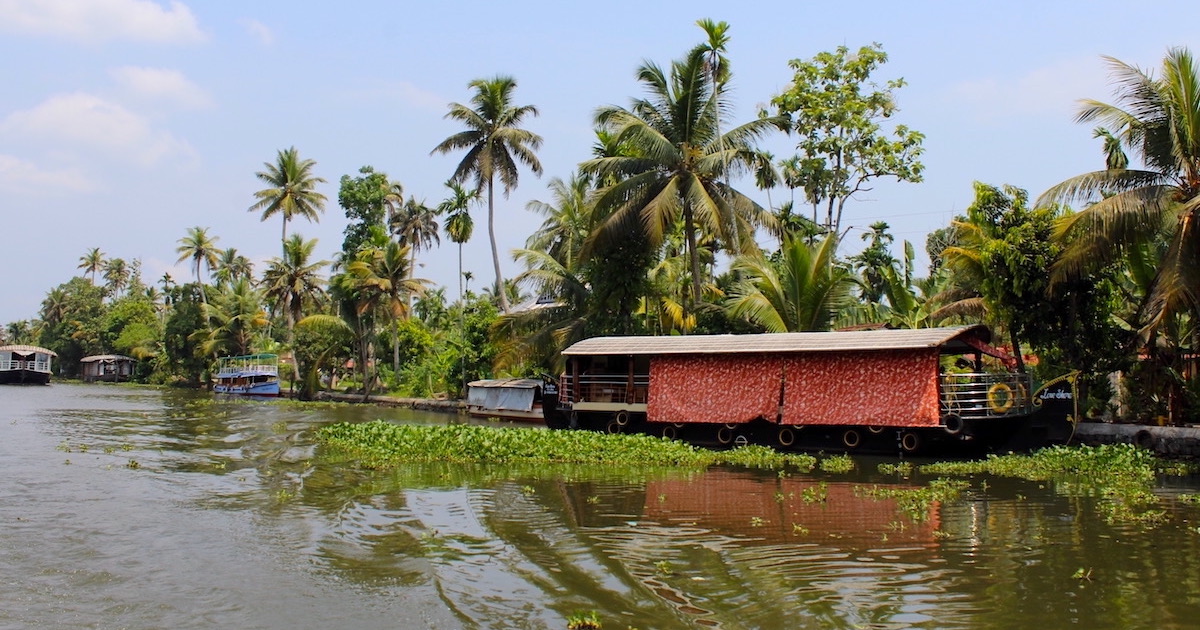
Storing your travel journal in a waterproof pouch or pocket is the most effective way to prevent water damage.
A plastic bag is effective too. However, it’s more prone to getting punctured by sharp objects and it’s less durable (and less eco-friendly) than a permanent waterproof pouch.
The following waterproof bags and pouches will protect your travel journal:
- Syncwire Waterproof Pouch Bag
- Eono Waterproof Waist Bag
- Waterproof Dry Bag Set
Keep it in a safe or a locked locker
If you’re not planning on travel journaling while you’re on the go, it’s probably best to leave it locked securely in your accommodation. Many hotels provide safes; it will usually be listed on the list of features on booking websites such as Booking.com or Hostelworld.com .
Some hostels and homestays may provide a locker instead. For this, you will often need to bring your own padlock. I’d recommend bringing a set of TSA-approved combination padlocks .
Carry an anti-theft backpack
It’s unlikely your travel journal will get swiped from your backpack. Thieves are far more likely to target a mobile phone.
Still, you should carry your valuables (journal included) in an anti-theft backpack. They come with features such as secret pockets, durable zippers, and designs that make it hard for thieves to gain access.
Anti-theft backpacks:
- Della Gao Anti-Theft Laptop
- TcIFE Ladies Backpack
- Oscaurt Theft Proof Travel Backpack
- Waterfly Anti-Theft Backpack
8. Don’t forget a pen (and back-ups).
A pen is one of the easiest things to forget on your trip. While they should be easy to get a hold of, there are some locations where you might find it tricker (Cuba, the middle of the jungle, or a small town, for example).
I’d recommend using a clickable pen, because this is less prone to leaking ink than a regular ballpoint. Bring spares if you can, because the ink might run out mid-journey or just when inspiration strikes.
Travel journaling examples
As someone who preaches about travel journaling, I’ve decided to share a few entries from my own travel diary so that you can get an idea for the sheer variety of what you can write about and how you can record the details.
Entry 1: Havana, Cuba (Saturday 22nd January, 2022)

Anisah and I arrived in Cuba late, around 7pm. It was already dark outside and thunder-storming – lightning, heavy rain that soaked through my papers.
The airport was very basic and very stringent with Covid (masks, stalls and many checks) but we cleared security swiftly and had only our backpacks as a carry-on.
Outside, there were taxi drivers holding names, and, surprisingly, they weren’t at all pushy. Our hostel was supposed to arrange a driver to take us directly there, but upon ringing twice (and spending a daunting £3 per minute on the calls), it appeared the driver was stuck in his house due to the storm.
We ended up in a yellow, licensed cab (which cost 25 euros – but down to 20 when the lady hosting us paid on our behalf).
I felt a little unnerved in the taxi, probably because I was exhausted, and because without maps, the driver relied on memory and locals in Havana for directions – and there weren’t many outside due to the torrential rain.
Entry 2: Ubud, Bali (Thursday 20th June, 2019)
Woke at 1am for the Mount Batur sunrise trek.
- Mount Agun nearby “coughed” up lava three weeks ago, according to our guide.
- 1,700-metre climb – our time was 1h35 but it felt way longer.
- Very steep, gravelly, and one of the toughest climbs I’ve done in my life. At one point, I told Jess, “Go on without me”.
- I ate a boiled egg and a banana at the top. I was still starving.
- Monkeys and dogs were fighting on the mountaintop.
- Monkeys almost stole my bag. They successfully stole a purse from another lady.
- We lost Pablo (Goncalo’s cousin) at the top of the mountain. The guide (jeans and sandals) was going to leave him behind, but we refused.
Entry 3: Havana, Cuba (Monday 31st January, 2022)
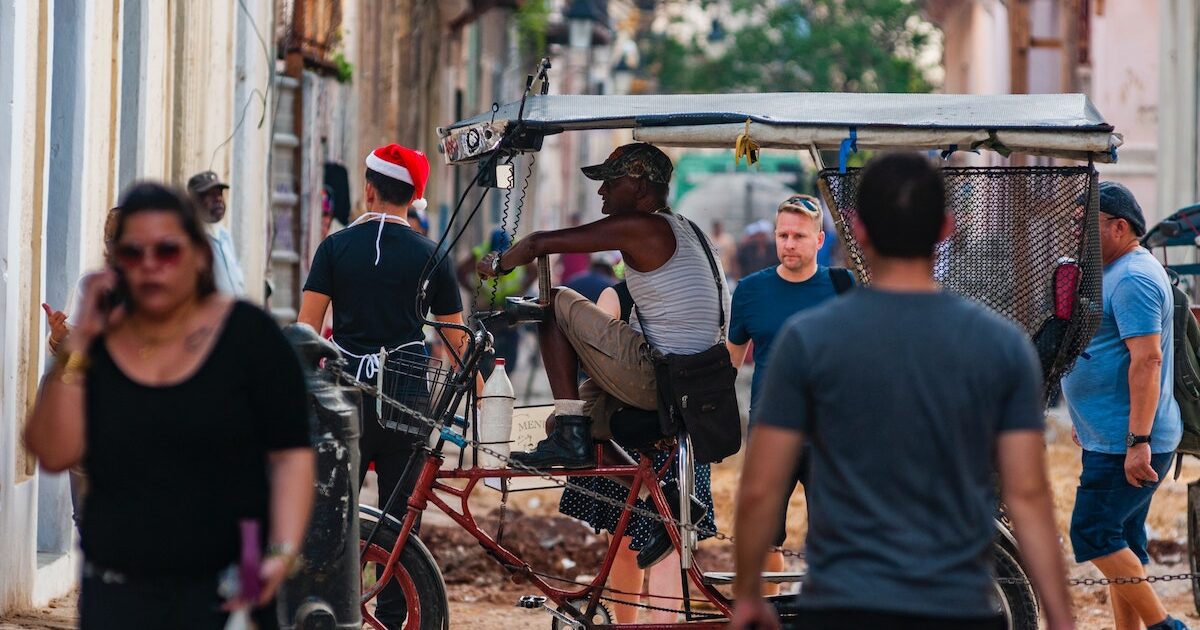
Our host gave us the cheque. We were short by 700 pesos. We went to hunt down an ATM. The ATM declined my card, as did the second ATM… and then the third ATM.
We started to panic, so we went to the Kempinski Hotel in Plaza Mayor to use their WiFi to contact my bank. It quickly emerged that the WiFi had completely cut out city-wide. At this point, we really started to panic. We had to leave for the airport in one hour.
We’d used up all of our options, so I told Anisah we’d have to ask someone for money. She was very dubious. We were walking down my favourite street when I spotted an older man and a younger woman, both blonde, looking lost and carrying cameras and bags.
I took off my mask and asked ‘Ingles?’. Nope, they spoke Spanish. In broken Spanish/English, I started to explain ‘plane’ (hand motion), ‘Londres’ (London), ‘desperate’, ‘taxi to airport’, and ‘short by 700’.
They replied, ‘No, a taxi should be 20’. They thought I meant euros! I said, ‘No, no. 700 pesos’. He nodded, ‘Oh, good price!’. To my disbelief, he pulled out a fat wallet filled with US dollars and pesos, and handed me a 500 and a 200. I nearly cried, but settled for tapping the lady’s arms and doing a prayer hand motion. People are truly good at heart.
Travel journaling: How do you make a memorable trip?
There are two halves to creating a travel journal. The first half is the part where you explore, observe and investigate .
The second half is the part where you write or create .
If one half of the formula is missing, you won’t have a travel journal at all.
Similarly, a travel notebook that documents seven days spent beside a swimming pool, tanning and reading a book, is unlikely to be as riveting as a travel journal that documents a journey into Dubrovnik’s old town, a bus ride through central Vietnam , wild swimming through waterfalls in Cuba or a cruise over the backwaters in Kerala , for example.
- Guide to the Parque Guanayara Waterfalls in Cuba
- Things to do at Alleppey and its backwaters
1. Research your trip.
A great motto, and one I live by, is ‘plan to travel without a plan’. If you want to make your trip memorable, it’s just as important not to over-plan as it is to dive in headfirst without a scooby of what you are doing.

Research enough so that you have a huge backlist of itinerary and destination ideas. Make a list of local accommodations that you like the sound of. Book essential, long-distance travel only.
You don’t know what will happen on the trip: delays, unexpected new acquaintances, weather events, romances, and so on.
Sometimes, the most interesting stories form from following your heart or your intuition, so if you’ve planned every single detail, you’ll end up boxed in.
Here are some ideas for your research:
- Research blogs to get practical advice from those who have visited a destination or attraction previously.
- Confirm the main modes of transport, currencies, and WiFi accessibility in your chosen destination. Practical details matter.
- Create a list of destinations and activities you’d like to engage in.
- Highlight your non-negotiable activities, desirable itineraries, and nice-to-have experiences. That way, you know which activities are the most important to you.
- Try to avoid tourist traps and opt for more authentic, local or offbeat travel experiences. These are often the most interesting experiences to write about.
2. Book your flights.
After your research is complete, the first thing you need to do is to book your flights. Skyscanner should be your go-to tool to search for flights. It scans the internet for the cheapest deals, routes and even the most eco-friendly transport options. Google Flights is another useful tool, which you can use to confirm that you’ve found the best deal.
3. Book interesting accommodation.
The accommodation you book has a direct impact on your travel journal entries. It can create drama, it can spice things up a little, or it can act as a relaxing backdrop.
Unique accommodation might liven up your entries: search for things like treehouses, camping tents, shepherd’s huts, and themed resorts.
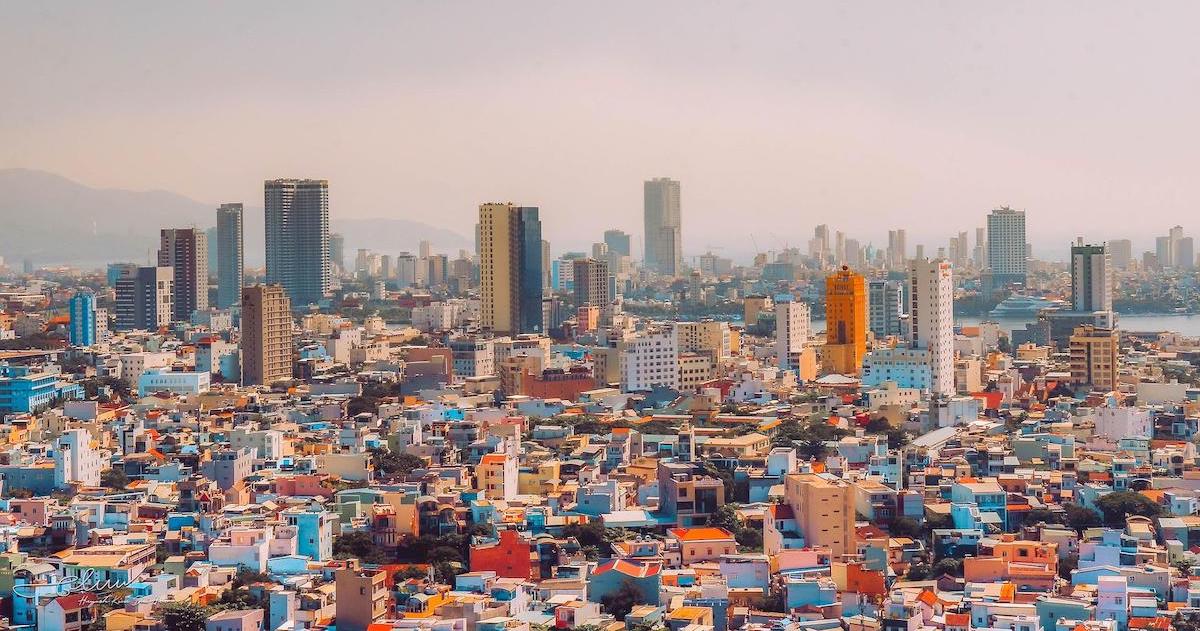
The following sites are my go-to websites for booking accommodation that will jazz up my travel journal entries:
Booking.com : Booking.com has a wide selection of accommodation, including eclectic stays. I also find that it generally has the best price, compared to other booking websites advertising the same hotel or accommodation.
Hostelworld : Staying in a hostel is one of the best ways to introduce new, wise and quirky characters into your diary. As most hostels have communal spaces, it’s very easy to delve into a deep conversation with a stranger, which is often one of the most interesting parts of travel journeys.
The act of staying in a dorm room or shared accommodation is eventful in itself; you don’t know what sorts of stories you might get out of one night spent in a dorm room. Was there a fight for a particular bed? A sleep talker? Late-night card games and conversations?
Homestay : Homestay specialises in accommodation where you stay in the home of a local. This is a brilliant option for those who are writing a travel diary, because it enables you to connect with the community, learn about local customs and have a more authentic travel experience.
4. Engage in more offbeat travel experiences.
Generally speaking, you won’t get as much of a story out of a tourist trap as you will out of a more unusual or hands-on travel experience. After six years of travelling, this is the biggest lesson I have learnt, and exactly why my blog specialises in offbeat travel experiences.

So, how do you find offbeat travel experiences for your travel journal?
- Ask at your hotel or hostel for local-led activities. Questions such as ‘where do you eat?’ or ‘where do you go to party?’ are also great ways to find local spots over tourist traps.
- Search for unique travel experiences on GetYourGuide . They list local-led travel experiences, which are a great way to meet fellow interesting travellers and get an insight into the offbeat sides of a destination.
- Use tour organisations that label themselves as ‘local-led’, ‘experiential’, ‘offbeat’ and ‘immersive’. These are tailored towards giving travellers unique, hands-on experiences, and not taking you on the usual tourist trails.
Travel journaling: How do you write a travel journal that is worth reading?
Not everyone wants to share their travel journal. However, if you do want to write your travel diary for an audience – whether that’s family, friends, an online following or a potential future publisher – it’s going to need to be worth reading.
1. Make your first draft in a physical travel journal.
Writing in chronological order and as soon as possible after the events happen, make your first draft in a physical travel journal.
Remember, that you’re going to edit your travel journal when you’re back home, so the most important thing isn’t writing perfectly. It’s about being consistent with your writing schedule and getting the details down on paper.
2. Be as specific as possible.
Specificity is even more important if you’re going to share your travel journal in one form or another.
Use exact times, exact dates, full names, ages, and detailed physical descriptions. This will bring your story to life, especially for those who weren’t there to watch it unfold in person.
3. Feature specific characters.
Just as a novel would be incomplete without a series of in-depth and interesting characters, your travel diary should also feature characters.
It doesn’t matter if they’re fleeting and disappear after an entry or two. The important thing is that your reader can envision and relate to your character.

That might mean describing them physically, disclosing their name (or pseudonym) and age, as well as describing their little quirks and mannerisms.
You should try to quote them directly when possible, and explore their mindset and their backstory.
4. Write up your travel journal.
When you arrive back home, write up your travel journal into a digital format, correcting spelling and grammar mistakes as you go. This will create a second copy of your journal, just in case anything happens to the physical copy.
5. Edit your travel journal.
If you’re going to be sharing your travel journal, the most important part is the editing process. Your journal may only need a light edit, which corrects any spelling or grammar mistakes and makes it more legible.
However, it may need a deeper edit if you’re truly going to post it online or send it to a publisher. The execution, plot, and characters will be more important in this case.
Traveling journaling: Types of travel journals
There are several types of travel notebooks, and they all have their specific advantages and disadvantages.
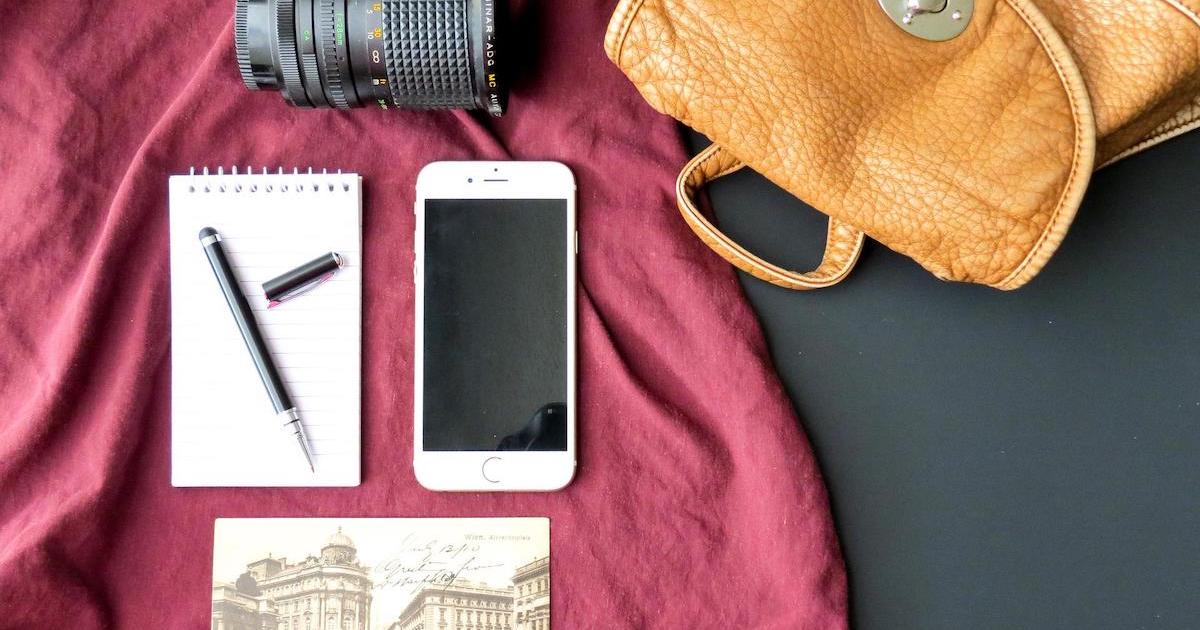
There are also some clear criteria you should be looking for out of a high-quality travel notebook:
Number of pages: The number of pages you’ll need will depend upon the length of your trip. If you’re travelling long-term, it’s better to have a notebook with a large number of pages rather than several, smaller notebooks which will take up more space overall.
Paperback or hardback: While a hardback notebook is more durable, a paperback journal is more lightweight. If you’re limited by space or weight limits, opt for a paperback. Size: Notebooks come in a variety of sizes, such as A4, A5, or A6. In general, an A5 notebook is ideal for a travel diary because it’s compact enough to carry in your packed or day luggage, but not so small that you’ll run out of space quickly.
Line size: Unless you have large handwriting, a journal with fairly narrow line sizes is ideal, because you can fit more writing onto one page, and therefore into one notebook. You could also choose a notebook without lines at all, which gives you more freedom over the size of your handwriting, but can end up with messy, undulating lines.
Paper thickness: Thinner paper is usually ideal, unless you are planning on painting, colouring-in or using heavy ink. Still, bear in mind that ink can bleed through the paper if it’s too thin, ruining other pages in your diary.
Binding: The binding of your notebook is important too. Ideally, you want a notebook that can spread out flat while you write and one where you don’t need to hold the edges of the pages down. A spiral-bound notebook is ideal over a smaller, tightly-bound notebook, in this case.
Traveling journaling: A6 travel diaries
Best for: weekend trips.
- Sovereign-Gear Antique Brown Refillable Travellers Notebook : This A6 notebook has a leather case and a refillable design, which includes three packs of paper (one unlined, one lined and one made from kraft paper). Even better, it has a PVC water-resistant zipper pocket for your valuables.
- Avocado and Spice Hardback A6 Notebook : With a hardback cover and 200 pages, this A6 notebook is an aesthetic travel diary that comes with its own protective velvet bag. It comes with the option of dotted, lined or blank pages, and has a built-in pen holder and a bookmark.
- Antony Olivier Leather Journal : With unlined paper and vintage brown leather, the Antony Olivier Leather Journal is a premium A6 notebook. There are 200 pages, all unlined.
- Newestor Pocket Notebook : The Newestor Pocket Notebook is small enough that you can tuck it into your back pocket. It’s probably not ideal for those who are going to be writing in long prose, but those who are planning on documenting their travels with bullet points or short paragraphs will have 144 pages at their disposal.
Travel journaling: A5 travel dairies
Best for: longer trips.
- EMSHOI A5 Notebook : With the option of lined, dotted or squared pages, the spiral-bound EMSHOI notebook has 640 A5-sized pages. It also has a water-resistant PVC cover.
- Antony Olivier Leather A5 Notebook : This is an A5-sized version of the high-quality, leather Antony Olivier notebook. It includes unlined 200 pages and a journal enamel pen.
- Silvine A5 Executive Soft Feel Notebook : The Silvine 15 Executive Notebook has 160 pages with a sewn case, inside pocket and ivory paper.
Travel journaling: Watercolour travel journals
Best for: artists.
- Seawhite A5 Travel Journal : This notebook has 60 pages and a back pocket. It’s also completely vegan.
- Hahnemuhle Watercolour Book A5 : This sturdy hardback book has 30 sheets of natural white fine-grain paper, ideal for panoramic paintings.
- Tumuarta Watercolour Journal : Designed as a travel watercolour notebook, this journal has 48 pages, made of 25% cotton. The pages can tolerate light washes and they’re micro-perforated, so you can tear out a page if you need to.
A travel journal is a great place to jot down travel affirmations if you experience anxiety or nerves before or during a trip or to write down packing lists and other plans. See where I’ve been to start planning your next trip.
Katie Treharne
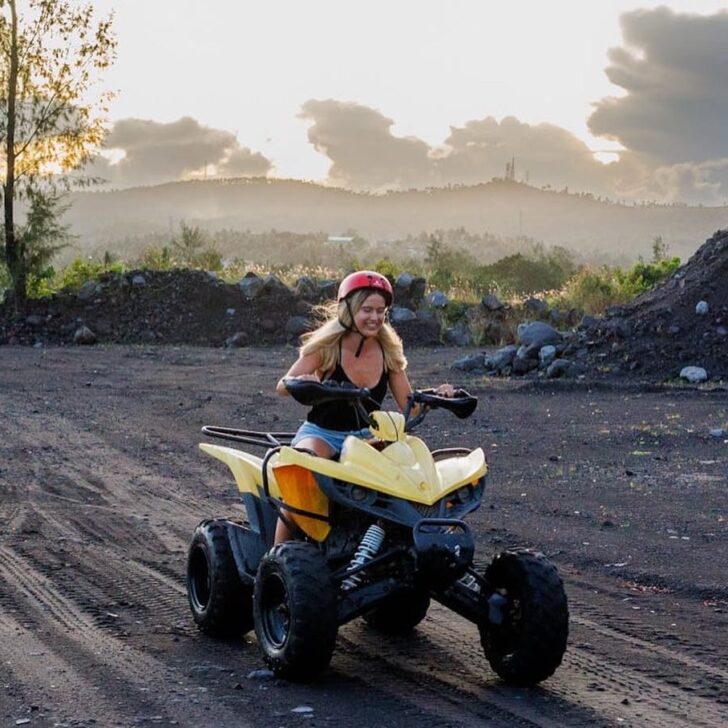
I’m Katie, the owner of Escape Artist Katie. I have been travel writing since 2018, including writing for luxury travel magazines and publications such as Wanderlust.
As well as being a digital nomad who works and lives abroad permanently, I’m a big advocate for offbeat travel and pushing yourself out of your comfort zone.
I hope you found my article useful – find out more about me here or keep up with my travels on Instagram .
Yes, add me to your mailing list
Privacy Overview
REQUEST A QUOTE

Marseille travel diary, a sing-song destination to learn French
Thian, a French teacher from Argentina, shares highlights from his Marseille language stay with his Buenos Aires students and Vacances Actives Linguistiques agency. This travel journal is packed with flavour and sing-song accents that made the group very happy as they took a deep dive into French culture and language… Provençal style.
My Marseille travel diary
Marseille is a buzzing and bustling city whose locals are famous for speaking their mind! It’s the perfect destination for my group of French language students: it’s easy to get chatting with people, there are lots of places to interact with locals and the city’s residents talk a lot! The local accent may not make oral comprehension any easier but it certainly spices things up!
We had a fantastic schedule packed with Provençal history, architecture, stunning scenery, thrilling tales and delicious dishes.
Two Marseille landmarks to visit with 800 years between them
Basilique notre-dame de la garde or bonne mère to friends.
This basilica started out as a humble chapel in the 13th century, sitting on the hill above Marseille. It became popular when sailors made it their place of worship after surviving a shipwreck. A huge bronze Virgin Mary was erected at the top of the monument in 19th century as it became a basilica, protector and emblem of the city which you can see wherever you are in Marseille.
I’ll never forget walking up a never-ending steep slope to it!! That was the workout of the day for the students! A deafening mistral whipped up when we reached the top… What with the 360° views, it was a breathtaking experience in every way! Inside the basilica, its mosaics were rich and opulent whilst the crypt was deep and serious. Notre Dame de la Garde is an absolute must-visit if you want to get to grips with the religion surrounding Bonne Mère!

MUCEM, a new beacon in Marseille Port
What a sight the MUCEM, Musée des Civilisations de l’Europe et de la Méditerranée is… It’s not just the exhibitions that are fascinating here, it’s the architecture too.
It’s a cube wrapped in beautiful latticework which visitors can see the surroundings through. It sits on the Marseille seafront so you can see the sea through the concrete net curtain as well as Fort Saint Jean and the city’s fantastic maritime heritage.
It’s a feast for the eyes and the students went wild for selfies here!

Stunning scenery from a dreamworld
A hike out to the marseille calanques.
This was the one we’d been waiting for: the iconic calanques They’re partly why we picked Marseille as our language stay destination with the VAL agency: sun, sea and incredible beaches lapped by the bright blue waves. We decided to hike there to soak up the unspoilt natural surroundings. It took hours walking through the garrigue hills to reach the hotspot. We took a picnic break to explore the local flora and its magical names: chêne kermès, figuier de Barbarie, griffes de sorcières… It was a great way to work on specific French vocabulary and get an insight into the threats to the area: fire, drought, extinction etc. Then all of a sudden, from the top of the hill we could see the calanque’s glittering water. After a dip to cool off, it was time to head back…

Château d’If, from a distance
We never get bored of the sea! The third day of our language stay in Marseille saw us set sail to the Frioul archipelago. The schedule included a stop at Château d’If standing on a rock. Unfortunately, the Mediterranean Sea’s swell didn’t let us dock so we listened to the story that made this place a legend: the Count of Monte Cristo by Alexandre Dumas.
The royal fortress was built by King François I in the 16th century and was a state prison for over 300 years. This magical yet imposing historical landmark really inspired my French students. A few months before, we studied the legend of Monte Cristo in class, read part of the novel and did a creative writing contest based on the character. What if Edmond Dantès had an accomplice in Château d’If?
That day in Marseille, the sea sealed our fate: we didn’t get to visit Château d’If and we reached the Frioul archipelago half-drowned by the splashing waves!
French treasure hunt on the Frioul archipelago
There’s nothing better than a treasure hunt to learn French through play. We planned a treasure hunt on Ratonneau, the main island in the archipelago, to explore the unspoilt setting full of rocks, sandy coves and crystal-clear water. The students had to answer a questionnaire in a set amount of time and gather information from locals (mainly shops) or use their sense of observation. No smartphones were allowed for this team activity so the students had to think and speak in French. The agency designed a treasure hunt that introduced them to the fascinating history of the Frioul archipelago: military adventures, quarantine site for foreign boats during the Great Plague, “Hôpital Caroline”, Ratonneau Fort and more. The students who got the right answers were allowed the first swim in the calanques!

Exploring Cosquer Cave: the highlight of our Marseille language stay!
Our French students fell in love with Cosquer Cave, an underwater prehistoric cave (the original is protected so you can only visit the replica). It’s an otherworldly place. The story of when the cave was discovered is as unique and magical as the site itself. A passionate diver called Henri Cosquer was exploring the Marseille shores when he stumbled upon the underwater cave in 1985 and its cave art a few years later! Mankind visited the cave 33,000 years ago… The replica of the cave and its art is open to small groups at a “submarine base” 3 floors under the sea. The students loved the incredibly realistic dive into prehistory.
Marseille, cinema city

Our students had already visited Marseille before coming here! Some of them had watched Stillwater , an American film from 2021 starring Matt Damon and Camille Cottin, shot entirely in Marseille’s streets and calanques.
Le Panier is a popular film location and we explored the neighbourhood’s sun-drenched and colourful lanes lined with artisans and bustling eateries. The guide told us that the district is where a famous soap opera is filmed and broadcast around the world in several languages: Plus Belle la Vie. Next, we visited the Belle de Mai Media Centre to tour the series’ film studios where everyday scenes are recreated from the famous Le Panier area.
Experiencing Marseille food and drink at the Vieux Port!
No language stay in Marseille would be complete with some good food and Provençal classics. Apparently, it’s easier to learn French on a full stomach. We started with a dish whose name is very hard for foreigners to pronounce: bouillabaisse . We dived into the recipe with a trip to the Vieux Port in the morning as the fishing boats came in, to see which fish go into the local concoction. Our young foodies weren’t too fond of scorpion fish, but they did like chatting with the shop owners and gazing at the pretty boats…
Pistou soup was far more popular at dinner time! The basil flavours made our palates sing, or “faire chanter les papilles” as the locals say! Last but not least, we tucked into navettes, crispy little boat-shaped biscuits scented with orange blossom. The shelves in the Les Navettes des Accoules shop in Le Panier were left bare!

A Marseille urban legend…
Did you know that a long time ago, a giant sardine blocked the Vieux Port in Marseille so ships couldn’t sail into the port. No matter what they did, the sailors couldn’t move it! The giant sardine refused to budge.
A little boy came up with the solution: he used a small mullet as bait to attract the giant sardine away from the port. He did it! The diversion tactic worked and the port was open again. This quirky little story says it all about Marseille’s storytelling legacy and the unbreakable bond between the city and the sea.
A language stay in Marseille means soaking up French culture and its bond with the sea. History (and prehistory), heritage, architecture, scenery, food and drink all rooted in the Mediterranean. Our week of morning French lessons and afternoon outings improved the entire group’s culture and personal development. A true blue adventure where the students got to chat with Marseille students, despite a few challenges understanding the sing-song Provençal accent!
Visit France during the Paris Olympics in 2024
Carnivals in provence, new year in france: traditional celebrations or something special , privacy overview.

How to Say 'Hello' in 100 Different Languages
Gearing up for a trip? Here's how to say "hello" in different languages spoken around the world.
The world is becoming a smaller place. Thanks to new technology and better modes of travel, we’re all able to connect faster than ever before. And that’s why learning a second language may be a great idea, especially for jet setters.
“Besides the obvious convenience of being able to communicate your basic traveling needs, learning another language could be the difference between a fun vacation and a life-changing experience,” Esteban Touma, a Babbel Live Teacher and language learning expert, shares with Travel + Leisure . “Sure, you can visit some tourist spots and see the highlights, but the best way to really connect with others and experience a different culture is the language. Even maintaining basic conversations will make your host country a more welcoming place.”
And if you’re an adult who’s never learned a second language, Touma says that shouldn’t stop you from trying.
“It takes effort and patience, but in general, I think the reason why people think it’s hard is because it’s such a different learning experience than anything else,” Touma says. “And as adults, it’s harder for us to keep an open mind. It’s not like learning chemistry or the history of the place you’re visiting, but rather, it’s like learning how to play tennis. You can study the rules, you can practice your serves, but the best way to learn it is to go out there and swing that racket, even if at first you’ll just lob the ball and miss the court. Just try to have fun.”
Don’t have time to learn an entire language before your trip? That’s OK. Just make sure to master this one word: Hello.
“It’s certainly the first thing you should learn,” Touma shares. “Just approaching someone and having this, the most basic of interactions, will open you up to a new reality.”
Here are 100 ways to say hello in different languages, translated by Google Translate and checked in part by our friends at Babbel , so you’re ready for wherever your travels take you next.
Related: The Best Language Learning Apps to Download Before Your Next Trip
Easy 100 Words & Phrases To Learn In Any Foreign Language
- Post author: Nicoletta
- Reading time: 17 mins read
- Post last modified: February 25, 2022
- Post comments: 0 Comments
Easy 100 Words & Phrases To Learn In Any Foreign Language + Guide To Learn Them
This article about the 100 words to learn in a foreign language may contain affiliate/compensated links. For full information, please see my disclaimer here.
Kick-start your language journey with this incredible list of 100 words to learn in any foreign language . Starting to learn a foreign language might seem intimidating or challenging. Many of us have the motivation but don’t know we to start. The first essential step is to learn the basic vocabulary . It will help you to get familiar with the language and understand your first sentences. This article will give you the list of essential 100 words to learn in a foreign language . I’ll also explain to you how to learn these words and what to do after you’ve learned them . Ready? Let’s get started.
List Of The Essential 100 Words To Learn In A Foreign Language
100 words make quite a long list. I can give you here the first 10 or 20, but let’s admit… The list would be simply too long to write into this blog post. And it would also be quite confusing. So that’s why I’ve created a nice word sheet for you, where you’ll have all the essential 100 words to learn . You can download it below for free and get started.
Get the List of 100 Words

Have you got your list? Perfect. After learning 4 languages (and I keep learning more) , I know how hard it can get to achieve your language learning goals . That’s why I would like to guide you a few steps further and help you out with it.
In the next sections, I’ll give you some tips and tricks on how you can learn these 100 words in a fun and engaging way . Then, once you learn them, I’ll explain how you can keep going and learn your foreign language further. Which steps you should take to proceed. And how you can finally go from the beginner to the intermediate level .
Effective Ways To Learn The First 100 Words In A Foreign Language
I don’t recommend you just to memorize these words by heart without any method. Of course, you can do it and might get there… but we want to have some fun when learning languages. It’ll be much more enjoyable and effective if you learn new vocabulary using great strategies . Here is a quick list of tips for how you can learn the first 100 in your foreign language:
- create flashcards with words & images
- create vocabulary walls
- play pexeso
- play scrabble
- record yourself saying the words aloud
- change words in a sentence
- write the words into vocabulary sheets
So, let’s break each tip down. I’ll explain to you step-by-step how you can implement each tip into your language learning journey.
1. Create Flashcards With Words & Images
At first, I recommend you create flashcards. Cut 200 rather smaller pieces of paper . The size is up to you. I advise you to cut smaller pieces because you can take and carry the flashcards anytime .
Once you cut these pieces (blank flashcards), separate them into two halves . In the first half, write all the 100 words you want to learn. Write one word per flashcard. In the second half, either draw or glue some images that you can associate with each word . I know it might be quite time-consuming to find images for each word… so take it easy. Do it as you wish. Maybe create images only for the more difficult words ranked 50 – 100 on our list. However, you want to do it. Feel free to also skip the images and only create 100 flashcards with each word from our list.
The reason why I recommend you also create flashcards with images is simple. From my own experience, you learn new vocabulary faster when you associate the words with something . And the best thing is images . If you picture an image in your head, you’ll think about the respective word faster. That’s why I highly recommend you have flashcards with words and images.
How To Learn 100 Words Using Flashcards?
Once you have the flashcards, it’s time to play with them . You can simply mix them up and try to find a pair of flashcards , one with a word and one with a suitable image.
Or, mix them all up and leave them up-side-down . After, take the first flashcards and put them on a table. Then, take the second flashcard and again put it on the table. Repeat the same process over and over again. Put it right next to it whenever you find an image or a word that matches another flashcard .
This process helps you to have the first contact with the words . When you see a word, you automatically think about its meaning, trying to find a suitable image for it. You might not realize, but the foreign words are already getting to your head.

2. Create Vocabulary Walls
Another tip is to create vocabulary walls. Again the same process. Cut 100 pieces of paper . Write one word from our list into each piece . You can use color paper here. Once you have all words, put them onto a wall in your bedroom, living room, or kitchen. It has to be a space where you spend most of the time in your day.
Pro Tip: I recommend you get color paper (10 different colors). Use one color for 10 words . So for every 10 words, choose a different color paper. This will help you differentiate the words and organize them on the wall . You can then learn 10 words per day . So each day, but these 10 words onto your wall and try to remember them. The next day, choose the second 10 words in a different color and put them again onto the wall to learn them. Repeat the process each day until you have all 100 words on your wall.
3. Play Pexeso
Playing pexeso is so much fun. And the best part of it is that you might not even realize you’re actually learning a foreign language. Take the flashcards you’ve created in the first step (words and image flashcards), and simply play pexeso with them. Mix them all up and try to find a match with one word and one image flashcard . You can either play with a friend or partner or on your own.
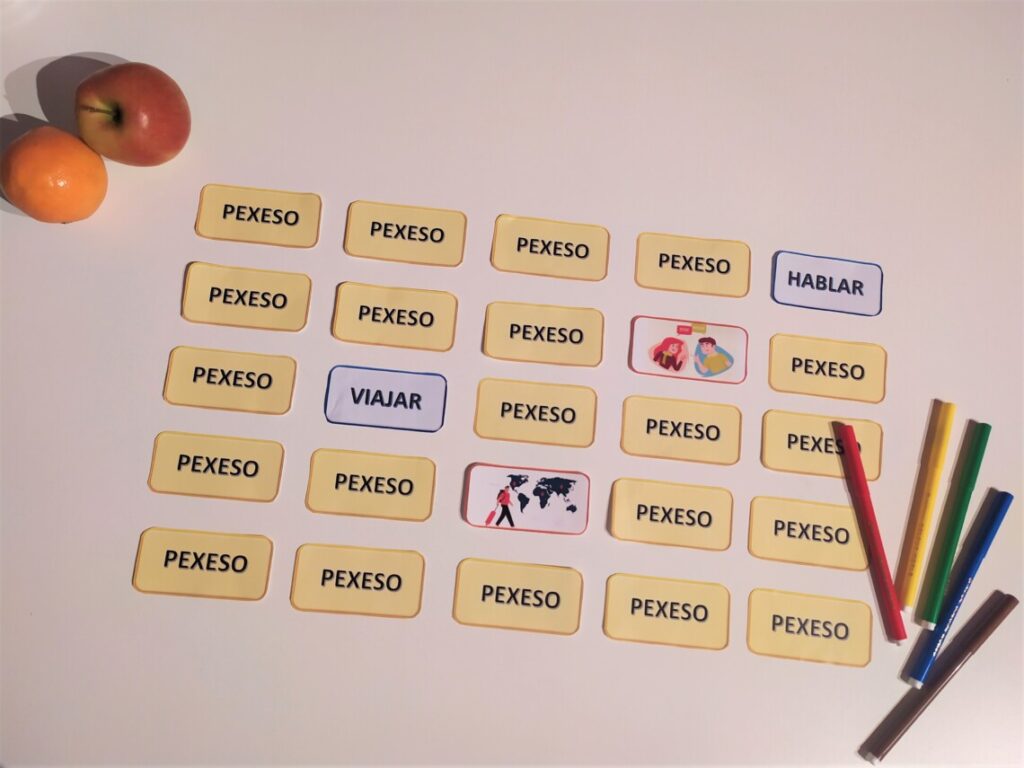
4. Play Scrabble
Another fun activity for learning your first 100 words in a foreign language is playing scrabble. But not the one you’ve maybe bought from a shop. We’ll have our own scrabble. As with the flashcards, cut pieces of paper . But this time, you won’t write words into each. Instead, you’ll only write a letter to each piece . Write each letter from an alphabet 3 times .
Once you have all letters, start playing. First, you’ll have to find suitable letters to put together and create one word . Either start with the first words from our list, or create any words from the list that comes to your mind.

5. Record Yourself Saying The Words Aloud
This is a perfect pronunciation practice . I always tell my students to practice pronunciation right from the beginning. What you can do is to write each word into Google translator and listen to its pronunciation . Then, repeat it in the foreign language after Google several times . Once you feel confident, start recording yourself .
You can either use a recorder or simply use your phone . So once you learn the pronunciation of the words, speak each word out loud while recording it. You can do only the first 20 or 30 words. Once you’re done, stop the recording and play it . This way, you can listen to yourself whether you pronounce the words correctly. And a big plus, you are learning the words.
Pro Tip: I use this method also in the intermediate stage of my language learning. Once I know the basics, and want to learn whole sentences and conjugation of verbs . I use a recorder, pronounce sentences I want to learn, and record myself . After, I take the recorder with me and listen to it when walking or doing other activities . It helps me not only to memorize words and sentences but also with the correct pronunciation.
6. Change Words In A Sentence
This is such a fun process. One of the best methods to learn a language on your own is talking to yourself . I do it all the time, and its worksperfectly. Whenever I go to a supermarket , or for a walk. I start talking to myself in a foreign language . It can be any topic. I either talk to myself about things I see during the walk, or I just say what I’m doing or what I’ve gone through for the past week.
We are at the beginning of our language learning. So just make it easier . Whenever you see or think about a word on our list , say it in a foreign language . You can talk to yourself in your native language. Once you come across a word from our 100-word list, say it in the foreign language. This will help you remember the words much better.
7. Write The Words Into Vocabulary Sheets
Last but not least, you can also use the vocabulary sheets I’ve designed for you. Find your own way how to use them. It basically serves as a temporary language notebook . You can keep track of each word you’re learning in a day. Or, if you’re creating a vocabulary wall, write all words you want to put onto the walk first into the vocabulary sheet. Once you put a word onto the wall, cross it out in the sheet.
Use Gold List Method
What you can also do is to use the so-called Gold List Method invented by David James .
On the first day , write all 100 words onto one sheet (or how many sheets you’ll need for it). Write them in a column . Next to each word , write its translation in your native language. Don’t try to memorize the words . Just leave it for the day. On the next day, do the same thing . Write all 100 words again into the sheets. Repeat this process for 6 days in a row .
On day 7 , take blank vocabulary sheets and the words with translations you wrote on day 6 . First, cover the words written in the foreign language with your hand or anything so that you can only see the translations in your native language. Then, go through each word and write it in the foreign language into the blank sheet. You’ll see how much you can remember just from writing all 100 words each day in the foreign language with translations.
Gold List Method Explanation
This method was invented by David James, a polyglot who saw the potential of how much our brain can remember just from writing new vocabulary down. It is mainly used by intermediate learners who can already create sentences . I slightly changed the method here and accommodated it to the very beginner stage . If you like to learn about the original Gold List method, refer to the OpenLearn website from the Open University and find out more.

These are the most effective strategies you can use to learn the first 100 words in any foreign language . Choose a technique that resonates with you. Whichever you like the most, go for it. You can also try all the techniques and then use the one you like the most.
I hope it will help you to learn your first 100 words in any foreign language.
What To Do After You Learn The First 100 Words?
Congratulations if you’ve learned your 100 words in a foreign language. That’s amazing. Now I don’t want to leave you alone, figuring out what to do next. So here are a few tips you can implement into your language learning process .
Vocabulary & Grammar Basics
Read my article about what to learn in a new language . It’ll give you the exact topics you need to learn as a beginner in any foreign language. I’ve broken down what you can learn each week, including basic vocabulary and grammar . So check it out. It’ll guide you through the next steps.
Topic Ideas To Learn In A New Language
Once you know the basics of your target language, it’s time to move further. I recommend you implement my language learning method . Thanks to it, I’ve learned 3 languages, which I now speak fluently. You’ll basically learn vocabulary in topics and create sentences . First, you’ll think about situations within which you want to speak a foreign language. Think about words necessary to communicate in that situation , and then you’ll create sentences with them.
To understand the entire process of learning topic-based vocabulary, read my article about the best way to learn a language by yourself . After, check out the best 8 topic ideas to learn vocabulary in a foreign language .
Incorporate More Language Resources
To get from the beginner level to the intermediate, I recommend you start incorporating more language resources .
Start listening to audiobooks that will help you understand the language more in-depth. Choose an audiobook from the following languages:
- 13 best German audiobooks for beginners
- 6 best French audiobooks for beginners
- 6 best Italian audiobooks for beginners
- 8 best Spanish audiobooks for beginners
- 6 best Russian audiobooks for beginners
You can also listen to the best language learning podcasts on the way to work or school and get more familiar with the language.
Choose some of the best foreign language books and start reading. Language magazines are also a great way to learn a foreign language. They often talk about topics we are interested in, which makes the learning process even more enjoyable.
Check out the best way to learn a language online for free . You can watch movies or videos if you feel less motivated to learn. You don’t necessarily have to stuff your head with new vocabulary all the time. Sometimes, it is just important to spend some time with the language. Movies and videos are great for it.
Read about best app to watch TV shows in different languages . It’ll help you to learn new vocabulary in context, which is the best way to learn any languge. Especially at the beginning of your language learning journey.
This is the list of the essential 100 to learn in a foreign language. Get the list and start learning your foreign language. Choose one or a few methods to learn the words in a fun and effective way. Also, check out my language blog for more inspiration on language learning.
I wish you a happy learning. Remember, the most important thing is to have fun when learning languages . It will bring you success.
You Might Also Like

8 Ideas For Topics To Learn When Learning A Language

How To Overcome Fear Of Speaking Foreign Language

How To Achieve Goals When Learning Languages
Leave a reply cancel reply.
You must be logged in to post a comment.

Creating a French Travel Diary
How to write a travel journal or travelogue with french learners, travel journals help you to write and document about the experience you had in paris, france. you can include the written description of the places you have visited, list down your itinerary, the photos that you took during your trip and even the short videos and voice recordings that you made during your time.
With this French language and culture project, students will be able to:
− Produce a travel information packet (flyer, brochure, power point, wiki, etc.) with useful information about a French-speaking region, country, city, or town of their choice.
− Focus on particular French grammatical structures based on their language proficiency.
− Present their travel information to the class in a 10-minute group presentation.
French Level Required
Intermediate, but the project can be adapted to beginning and advanced French learners
Encourage students for weeks prior to this lesson to bring in location specific items such as travel guides (in any language), maps, vacation brochures, souvenirs, photos, ethnic artifacts (clothing, pottery, etc.), and travel website URLS. Make sure the items are identified by the student’s name.
This French class project can take several days, but it can also be spread out and worked on for a series of weeks.
You and your travel companion have a combined budget of $1500.00. Depending on where you chose to go this can be much or not much money1. Each one of you has different interests and likes so you must plan your itinerary accordingly, incorporating activities that will be suitable for both. You will do all these fun things and visit all of these exciting places and bring back information and pictures for a multimedia travelog book and presentation. You want to have a great trip and bring back plenty of memories!
You and your friend will keep a daily travel journal of your week’s stay in the French-speaking region you chose and gather materials to help you remember this incredible trip and be able to share it with friends and family.

You will have 2 signed entries per day (1 per partner), and will need to record the time at which each entry was made. Each French travel journal entry should be about 100-word long (so about 200 words total) and include descriptions of the activities and places you saw (e.g.: hotel you stayed at, restaurants you dined at, sights you visited and weather on the day of your visit, street names. etc.), sketches of things, people, etc. you have seen.
You should also include how much you spent and on what per day. Make sure to stay within budget. Your entries should have a personal feel to them.
Make it seem as if you’re really there. Share your interests, your joys, your pains, etc.
Your daily entries should at least include the following:
1. An itinerary showing where you were the day before and where you are today.
2. The hotel/youth hostel/camping site, etc. where you are staying at.
3. The food you eat, the drinks you have, and where you consume these.
4. The sights and landmarks you visit, the museums you go to. You mention their history and significance, for the museum, the collections that you saw.
5. The recreational activities you do (walk at the beach, hiking, rock-climbing, wind-surfing, horse-riding, etc.). During your trip, you also go see one French movie and attend the concert of a French artist. You will insert photos, sketches, memorabilia, receipts, etc. as you go.
How Do You Organize your Project?
1. To simplify things, we will say that $1 =1 Euro (or the local currency)

3. Meet with your partner to look at your findings and decide how to present your trip’s information as a multimedia travelog.
4. Save all your information, text, pictures, etc. on a flash drive or web space. Write your French travelog as follows:
5. Date and time each entry. If your level is lower intermediate, write in the present tense or ‘future proche’ as if you were writing your entries in the moment.
6. Make extensive use of the vocabulary that you are learning.
7. Label your photos and memorabilia, insert a caption.
This French language and culture project has given you the opportunity to learn about a French-speaking region or country. You should now feel as if you have really been there and have a desire to return to it in reality rather than virtually.
Bon Voyage!
- Français ( French )
oneworldguide.com
translation in 100+ different languages in one place
Diary in different languages
Would you like to know how to say diary in 100 different languages? Check out our translations in other languages.
Afrikaans – diary in afrikaans
How to say diary in Afrikaans? Answer is simple –> dagboek
Albanian – diary in albanian
How to say diary in Albanian? Answer is simple –> ditar
Amharic – diary in amharic
How to say diary in Amharic? Answer is simple –> ማስታወሻ ደብተር
Arabic – diary in arabic
How to say diary in Arabic? Answer is simple –> مذكرات
Armenian – diary in armenian
How to say diary in Armenian? Answer is simple –> օրագիր
Azerbaijani – diary in azerbaijani
How to say diary in Azerbaijani? Answer is simple –> gündəlik
Basque – diary in basque
How to say diary in Basque? Answer is simple –> egunkari
Belarusian – diary in belarusian
How to say diary in Belarusian? Answer is simple –> дзённік
Bengali – diary in bengali
How to say diary in Bengali? Answer is simple –> দিনলিপি
Bosnian – diary in bosnian
How to say diary in Bosnian? Answer is simple –> dnevnik
Catalan – diary in catalan
How to say diary in Catalan? Answer is simple –> dietari
Cebuano – diary in cebuano
How to say diary in Cebuano? Answer is simple –> diary
Chichewa – diary in chichewa
How to say diary in Chichewa? Answer is simple –> diary
Corsican – diary in corsican
How to say diary in Corsican? Answer is simple –> ghjurnale
Croatian – diary in croatian
How to say diary in Croatian? Answer is simple –> dnevnik
Czech – diary in czech
How to say diary in Czech? Answer is simple –> deník
Danish – diary in danish
How to say diary in Danish? Answer is simple –> dagbog
Dutch – diary in dutch
How to say diary in Dutch? Answer is simple –> dagboek
English – diary in english
How to say diary in English? Answer is simple –> dialann
Esperanto – diary in esperanto
How to say diary in Esperanto? Answer is simple –> taglibro
Estonian – diary in estonian
How to say diary in Estonian? Answer is simple –> päevik
Filipino – diary in filipino
How to say diary in Filipino? Answer is simple –> talaarawan
Finnish – diary in finnish
How to say diary in Finnish? Answer is simple –> päiväkirja
French – diary in french
How to say diary in French? Answer is simple –> journal intime
Frisian – diary in frisian
How to say diary in Frisian? Answer is simple –> deiboek
Galician – diary in galician
How to say diary in Galician? Answer is simple –> diario
Georgian – diary in georgian
How to say diary in Georgian? Answer is simple –> დღიური
German – diary in german
How to say diary in German? Answer is simple –> Tagebuch
Greek – diary in greek
How to say diary in Greek? Answer is simple –> ημερολόγιο
Gujarati – diary in gujarati
How to say diary in Gujarati? Answer is simple –> ડાયરી
Haitiancreole – diary in haitiancreole
How to say diary in Haitiancreole? Answer is simple –> jounal pèsonèl
Hausa – diary in hausa
How to say diary in Hausa? Answer is simple –> diary
Hawaiian – diary in hawaiian
How to say diary in Hawaiian? Answer is simple –> diary
Hebrew – diary in hebrew
How to say diary in Hebrew? Answer is simple –> יומן
Hindi – diary in hindi
How to say diary in Hindi? Answer is simple –> डायरी
Hungarian – diary in hungarian
How to say diary in Hungarian? Answer is simple –> napló
Icelandic – diary in icelandic
How to say diary in Icelandic? Answer is simple –> dagbók
Igbo – diary in igbo
How to say diary in Igbo? Answer is simple –> akwụkwọ edetu
Indonesian – diary in indonesian
How to say diary in Indonesian? Answer is simple –> buku harian
Irish – diary in irish
How to say diary in Irish? Answer is simple –> dialann
Italian – diary in italian
How to say diary in Italian? Answer is simple –> diario
Japanese – diary in japanese
How to say diary in Japanese? Answer is simple –> 日記
Javanese – diary in javanese
How to say diary in Javanese? Answer is simple –> buku harian
Kannada – diary in kannada
How to say diary in Kannada? Answer is simple –> ಡೈರಿ
Khmer – diary in khmer
How to say diary in Khmer? Answer is simple –> កំណត់ហេតុប្រចាំថ្ងៃ
Korean – diary in korean
How to say diary in Korean? Answer is simple –> 일기
Kurdish – diary in kurdish
How to say diary in Kurdish? Answer is simple –> rojpirtûk
Kyrgyz – diary in kyrgyz
How to say diary in Kyrgyz? Answer is simple –> күндөлүк
Lao – diary in lao
How to say diary in Lao? Answer is simple –> ປະຫວັດສາດ
Latin – diary in latin
How to say diary in Latin? Answer is simple –> diarium
Latvian – diary in latvian
How to say diary in Latvian? Answer is simple –> dienasgrāmata
Lithuanian – diary in lithuanian
How to say diary in Lithuanian? Answer is simple –> dienoraštis
Luxembourgish – diary in luxembourgish
How to say diary in Luxembourgish? Answer is simple –> Tagebuch
Malagasy – diary in malagasy
How to say diary in Malagasy? Answer is simple –> Diary
Malay – diary in malay
How to say diary in Malay? Answer is simple –> buku harian
Malayalam – diary in malayalam
How to say diary in Malayalam? Answer is simple –> ഡയറി
Maltese – diary in maltese
How to say diary in Maltese? Answer is simple –> djarju
Maori – diary in maori
How to say diary in Maori? Answer is simple –> diary
Marathi – diary in marathi
How to say diary in Marathi? Answer is simple –> डायरी
Nepali – diary in nepali
How to say diary in Nepali? Answer is simple –> डायरी
Norwegian – diary in norwegian
How to say diary in Norwegian? Answer is simple –> dagbok
Pashto – diary in pashto
How to say diary in Pashto? Answer is simple –> ډایري
Persian – diary in persian
How to say diary in Persian? Answer is simple –> دفتر خاطرات
Polish – diary in polish
How to say diary in Polish? Answer is simple –> Dziennik
Portuguese – diary in portuguese
How to say diary in Portuguese? Answer is simple –> diário
Punjabi – diary in punjabi
How to say diary in Punjabi? Answer is simple –> ਡਾਇਰੀ
Romanian – diary in romanian
How to say diary in Romanian? Answer is simple –> jurnal
Samoan – diary in samoan
How to say diary in Samoan? Answer is simple –> tusi faʻasologa
Scotsgaelic – diary in scotsgaelic
How to say diary in Scotsgaelic? Answer is simple –> leabhar-latha
Sesotho – diary in sesotho
How to say diary in Sesotho? Answer is simple –> bukana
Shona – diary in shona
How to say diary in Shona? Answer is simple –> diary
Sindhi – diary in sindhi
How to say diary in Sindhi? Answer is simple –> ڊراما
Sinhala – diary in sinhala
How to say diary in Sinhala? Answer is simple –> දිනපොත
Slovak – diary in slovak
How to say diary in Slovak? Answer is simple –> diár
Slovenian – diary in slovenian
How to say diary in Slovenian? Answer is simple –> Dnevnik
Somali – diary in somali
How to say diary in Somali? Answer is simple –> xusuus qor
Spanish – diary in spanish
How to say diary in Spanish? Answer is simple –> diario
Sundanese – diary in sundanese
How to say diary in Sundanese? Answer is simple –> buku diari
Swahili – diary in swahili
How to say diary in Swahili? Answer is simple –> diary
Swedish – diary in swedish
How to say diary in Swedish? Answer is simple –> dagbok
Tamil – diary in tamil
How to say diary in Tamil? Answer is simple –> நாட்குறிப்பில்
Telugu – diary in telugu
How to say diary in Telugu? Answer is simple –> డైరీ
Thai – diary in thai
How to say diary in Thai? Answer is simple –> ไดอารี่
Turkish – diary in turkish
How to say diary in Turkish? Answer is simple –> günlük
Urdu – diary in urdu
How to say diary in Urdu? Answer is simple –> ڈائری
Uzbek – diary in uzbek
How to say diary in Uzbek? Answer is simple –> kundalik
Vietnamese – diary in vietnamese
How to say diary in Vietnamese? Answer is simple –> Nhật ký
Welsh – diary in welsh
How to say diary in Welsh? Answer is simple –> Dyddiadur
Yiddish – diary in yiddish
How to say diary in Yiddish? Answer is simple –> טאָגבוך
Yoruba – diary in yoruba
How to say diary in Yoruba? Answer is simple –> iwe itosiwe
Zulu – diary in zulu
How to say diary in Zulu? Answer is simple –> idayari
Filipino – diary in Filipino
Hebrew – diary in hebrew, leave a comment cancel reply.
You must be logged in to post a comment.
Journal in Different Languages
Discover 'journal' in 134 languages: dive into translations, hear pronunciations, and uncover cultural insights..
Updated on March 6, 2024
A journal is a daily record of experiences, thoughts, and observations. It's a place to express yourself, set goals, and document your personal growth. The significance of the journal cannot be overstated, as it has been a trusted companion for many great minds throughout history.
From Leonardo da Vinci's notebooks to the diary of Anne Frank, journals have played a crucial role in shaping our cultural landscape. They offer a unique window into the human experience, providing insight into the thoughts, feelings, and motivations of individuals from all walks of life.
Understanding the translation of the word 'journal' in different languages can open up new avenues of communication and cultural exchange. For example, in Spanish, a journal is called 'diario', while in French, it's 'journal'. In German, it's 'Tagebuch', and in Japanese, it's '日記' (nikki).
By learning these translations, you can connect with people from different cultures, gain a deeper understanding of their perspectives, and share your own experiences in a more meaningful way.
Journal in Sub-Saharan African Languages
- Journal in North African & Middle Eastern Languages
Journal in Western European Languages
Journal in eastern european languages, journal in south asian languages, journal in east asian languages, journal in south east asian languages, journal in central asian languages, journal in pacific languages, journal in american indigenous languages, journal in international languages, journal in others languages, journal in north african & middle eastern languages, click on a letter to browse words starting with that letter.

- Translation
Traveller in Different Languages
- Arslan Hussain
- November 22, 2022

Table of Contents
Traveller in Different Languages: An individual who travels frequently or makes a journey is referred to as a traveler. Travelers who fly long distances frequently suffer from puffy ankles and feet. Travelers live in vans or other vehicles, rather than living in one place, rather than traveling from place to place. An individual who travels or has traveled abroad. Rather than living in one place for a long period of time, a person moves around from place to place. It is common for some people to travel frequently, whether it is for work or for pleasure. While traveling, you’re considered a traveler regardless of whether this is your first time leaving home.
Traveller in European Languages
Translation of word Traveller in almost 42 European languages.
Traveller in Asian Languages
Translation of word Traveller in almost 36 Asian languages.
Traveller in Middle East Languages
Translation of word Traveller in 4 middle eastern languages.
Traveller in African Languages
Translation of word Traveller in almost 13 African languages.
Traveller in Austronesian Languages
Translation of word Traveller in almost 10 Austronesian languages.
Traveller in Other Foreign Languages

Arslan Hussain, founder of The Different Languages, is an experienced translator passionate about languages and cultures. Through his website, he shares his knowledge and love for different languages, making learning accessible and enjoyable.
- Terms & Conditions
- Privacy Policy
Privacy Overview
Journal in Different Languages. Learn How to Say and Translate
Journal in Different Languages: Please find below many ways to say journal in different languages. This page features translation of the word "journal" to over 100 other languages. We also invite you to listen to audio pronunciation in more than 40 languages, so you could learn how to pronounce journal and how to read it.
Saying Journal in European Languages
Saying journal in asian languages, saying journal in middle-eastern languages, saying journal in african languages, saying journal in austronesian languages, saying journal in other foreign languages.

- journalistic

IMAGES
VIDEO
COMMENTS
Javanese is the official language of Indonesia. 22. Italian: il viaggio. Italian is the official language of Italy, as well as San Marino, and certain provinces in Switzerland. It is the closest language to ancient Latin. 23. Farsi : سفر. Farsi is also known as Persian, and is the official language of Iran. 24.
Here are five effective ways to enhance self-reflection and personal growth through your travel journal: 1. Embracing emotions: Use your journal to describe your feelings and emotions during your travels. This practice can help you process and comprehend your emotional responses. 2.
Unlike a regular journal, a travel diary focuses specifically on your journeys, including details about the different places you visit, the people you meet, the food you try, and the sights you see. Benefits of Keeping a Travel Journal. Keeping a travel journal offers numerous benefits beyond simply documenting your experiences.
5. Write about the food. Just because you call it your travel diary, doesn't mean it can't double as a food diary. If there are any foods you loved, dishes you hated or recipes you can't live without, write them down to remember them all. Maybe some new fare you tried will influence your tastes when you return home.
Welcome to the language page of Anja On Adventure! Here you will find language travel guide and basic phrases to know in different languages as a tourist. Having some knowledge of the local language is seen as a sign of respect and courtesy.Each basic language guide has more than 73 basic travel phrases included. They were created with the help of a native language speaker.
It is one of the most spread languages around the world, and it is the official language in 21 different countries. To this day, there are approximately 500 million Spanish speakers worldwide. Being a Romance language, Spanish shares the same origins with Portuguese and Italian, for example, which leaves you open to building further language ...
Travel journaling made simple: write the ultimate travel diary using the following prompts, layouts, example entries and the best notebooks. ... What works for you will be different than what works for other travel journalers. 1. Brainstorming. You don't need to wait until your departure date to begin travel journaling. It can also be used to ...
Pronunciation: Travel in Different Languages: Please find below many ways to say travel in different languages. This page features translation of the word "travel" to over 100 other languages. We also invite you to listen to audio pronunciation in more than 40 languages, so you could learn how to pronounce travel and how to read it.
The word 'यात्रा' (travel) in Hindi can also refer to a pilgrimage or spiritual journey. The usage of the word "ಪ್ರಯಾಣ" is also seen to refer to the movement of celestial bodies. The word "യാത്ര" in Malayalam shares a common root with "travel" in English, where "tra" refers to going across or passing through.
As a language learner, you can't write perfect sentences from the get-go. Especially as a beginner. That's why there are incredible tools are your disposal to make this even better.
Best Travel Journaling Apps. 1. Day One. The Day One travel diary has robust editing and also some solid cross-platform functionality and syncing. Day One tops most of these lists because it's actually that good—and it's been around since 2011, so you know your travel memories are safe with this online diary app.
abentura. The Basque word "abentura" is derived from the Latin word "adventura", meaning "thing that will happen". Catalan. aventura. The word "aventura" is derived from Latin "adventura", meaning "what is about to happen" or "what will come". The alternate meaning of "aventura" in Catalan is "event". Croatian.
Learn How to Say and Translate. Diary in Different Languages: Please find below many ways to say diary in different languages. This page features translation of the word "diary" to over 100 other languages. We also invite you to listen to audio pronunciation in more than 40 languages, so you could learn how to pronounce diary and how to read it.
It should be feasible, with or without facilities, to travel by foot, vehicle, mountain bike, rail, aircraft, boat, plane or different methodologies. Travel may also be a road or a round trip, as on account of the travel industry. Travel in All Languages. Translation of word Travel in almost 100+ different languages of the world.
Marseille travel diary, a sing-song destination to learn French. Thian, a French teacher from Argentina, shares highlights from his Marseille language stay with his Buenos Aires students and Vacances Actives Linguistiques agency. This travel journal is packed with flavour and sing-song accents that made the group very happy as they took a deep ...
Here are 100 ways to say hello in different languages, translated by Google Translate and checked in part by our friends at Babbel, so you're ready for wherever your travels take you next.
In fact, the diary entry is usually great preparation for a later conversation, if you need to go over a few things. 2. You'll learn new, everyday words. When you write focus on your daily life journaling in another language, you're forced to learn new words.
So each day, but these 10 words onto your wall and try to remember them. The next day, choose the second 10 words in a different color and put them again onto the wall to learn them. Repeat the process each day until you have all 100 words on your wall. 3. Play Pexeso.
Write your French travelog as follows: 5. Date and time each entry. If your level is lower intermediate, write in the present tense or 'future proche' as if you were writing your entries in the moment. 6. Make extensive use of the vocabulary that you are learning. 7. Label your photos and memorabilia, insert a caption.
How to say diary in Hebrew? Answer is simple -> יומן. Check out next translation: Dismiss in different languages. Uncategorized D. Dictionary in different languages.
Understanding the translation of the word 'journal' in different languages can open up new avenues of communication and cultural exchange. For example, in Spanish, a journal is called 'diario', while in French, it's 'journal'. In German, it's 'Tagebuch', and in Japanese, it's '日記' (nikki). By learning these translations, you can connect ...
Traveller in Austronesian Languages. Translation of word Traveller in almost 10 Austronesian languages. Different Languages. Word Traveller. Cebuano. magpapanaw. Filipino. manlalakbay. Hawaiian.
This page features translation of the word "journey" to over 100 other languages. We also invite you to listen to audio pronunciation in more than 40 languages, so you could learn how to pronounce journey and how to read it. Saying journey in European Languages. Saying journey in Asian Languages. Saying journey in Middle-Eastern Languages.
Journal in Different Languages: Please find below many ways to say journal in different languages. This page features translation of the word "journal" to over 100 other languages. We also invite you to listen to audio pronunciation in more than 40 languages, so you could learn how to pronounce journal and how to read it. ...